Welcome to Mensnorth.com, where we believe that understanding the nuances of style isn’t just for the faint of heart – it’s for anyone who appreciates real substance. Today, we’re cutting through the fluff to deliver the definitive breakdown of women’s dress styles. Forget fleeting trends; we’re talking about the foundational garments that have shaped fashion and continue to empower women in every aspect of their lives.
Dresses are more than just fabric and seams; they’re statements. They define occasions, reflect personalities, and project confidence. Whether you’re aiming for boardroom dominance, a relaxed weekend vibe, or a show-stopping entrance, there’s a dress designed for the job. We’re stripping away the pretense and getting down to the brass tacks of what makes each of these 10 essential dress styles a must-know. Let’s get to it.
1. The A-Line Dress: Unyielding and Universally Flattering
The A-Line dress is a classic for a reason. Its simple, elegant silhouette has stood the test of time, proving its versatility and enduring appeal. The name itself perfectly describes its shape: fitted at the shoulders and chest, it gradually widens from the waist down, creating a distinct “A” form. This isn’t just a pretty shape; it’s a strategically brilliant one.
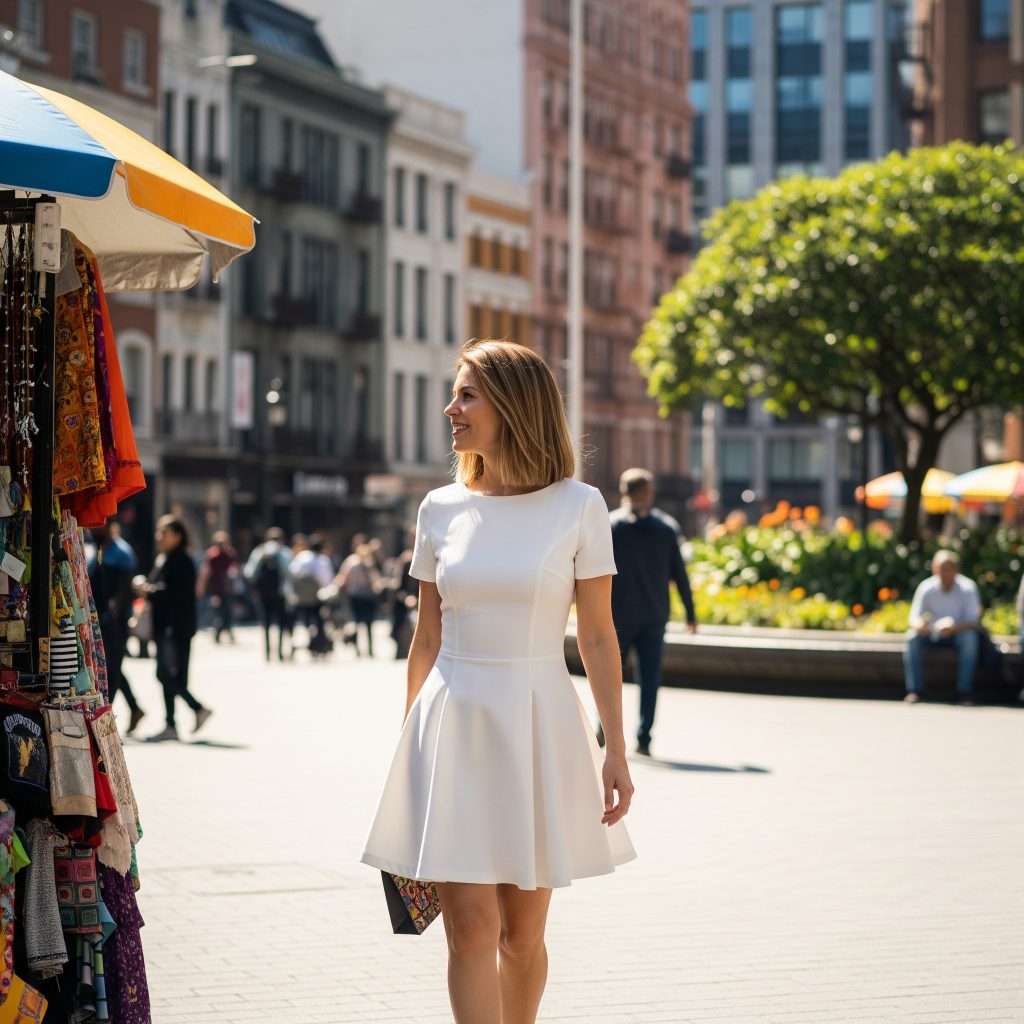
Origins and Evolution: The A-line silhouette was famously introduced by Christian Dior in his 1955 spring collection, though it gained widespread popularity with Yves Saint Laurent’s 1958 “Trapeze” collection. It was a revolutionary departure from the cinched waists and voluminous skirts of the 1950s, offering women a more relaxed yet sophisticated option. Over the decades, it has been reinterpreted countless times, proving its adaptability to various fashion eras. From the mod sensibilities of the 1960s to the minimalist trends of the 1990s and its current ubiquitous presence, the A-line has maintained its integrity.
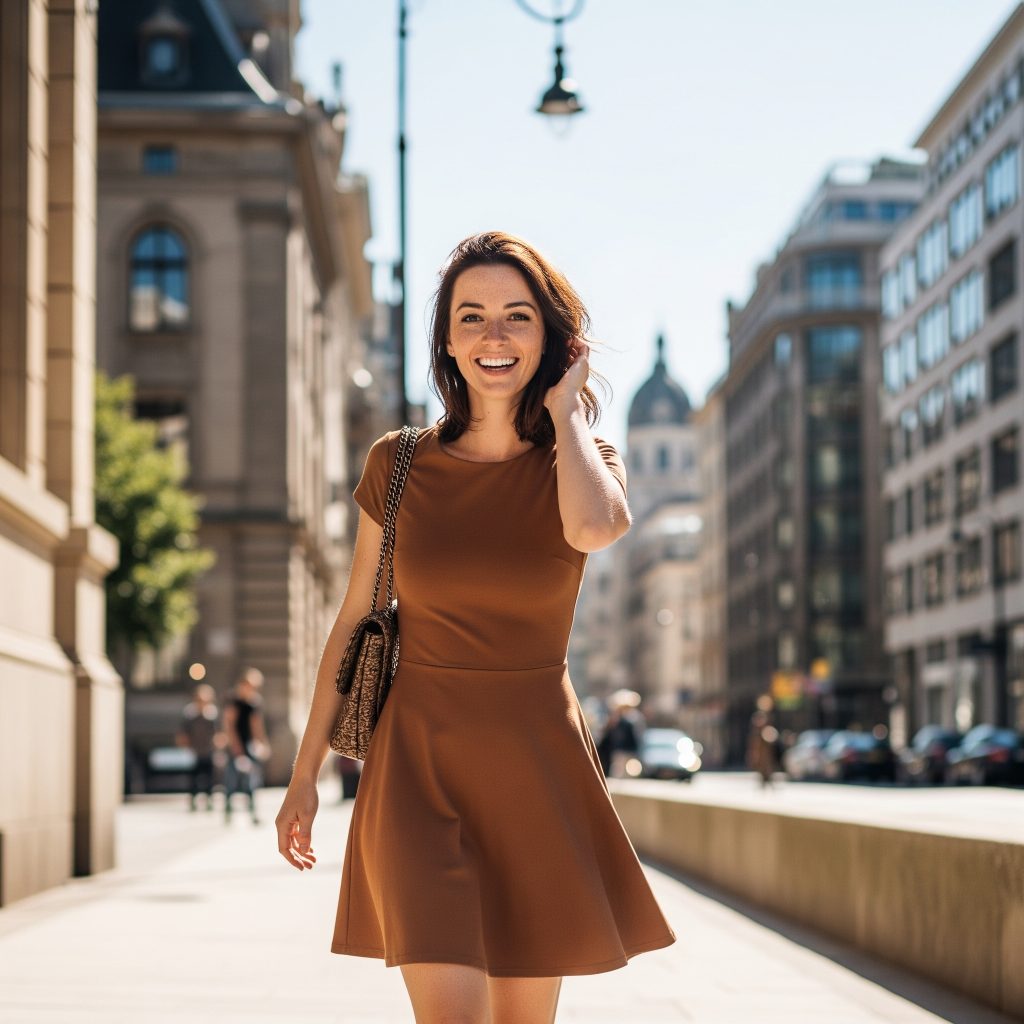
Why It Endures: The genius of the A-line lies in its ability to flatter nearly every body type. The fitted top half highlights the shoulders and bust, while the gradual flare effortlessly skims over the hips and thighs, creating a balanced and elongated look. It provides comfort without sacrificing elegance, offering freedom of movement unlike more restrictive styles. This makes it suitable for a vast array of occasions, from casual daywear to formal events.
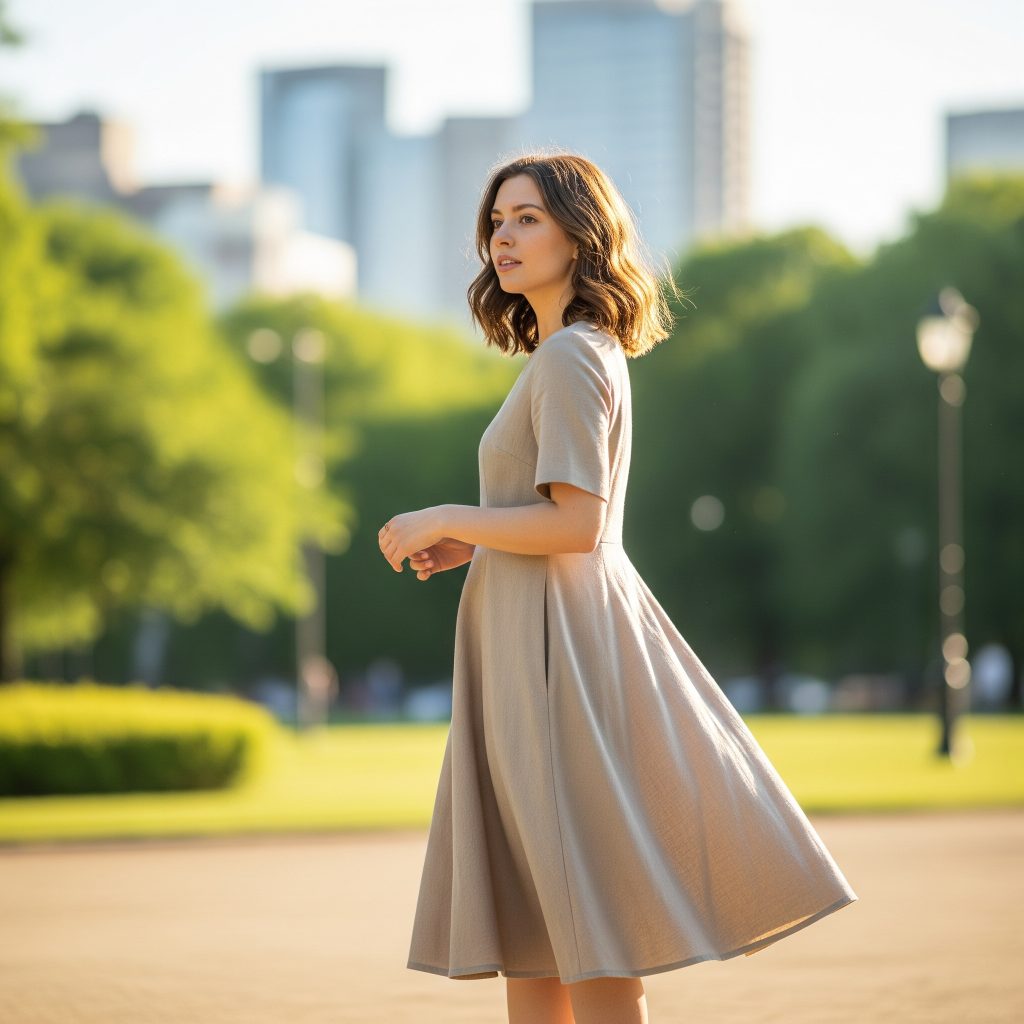
Key Characteristics:
- Silhouette: Distinct “A” shape, narrow at the top, widening towards the hem.
- Fit: Fitted bodice, flowing skirt.
- Length: Can vary from mini to midi to maxi, though knee-length and midi are most common.
- Necklines & Sleeves: Extremely versatile; can feature any neckline (round, V-neck, boat, scoop) and sleeve length (sleeveless, short, long).
- Fabric: Works well with a wide range of fabrics, from crisp cottons and linens for casual wear to luxurious silks, satins, and wools for more formal iterations.
Styling the A-Line: The A-line dress is a chameleon in your wardrobe.
- For the Office: A solid color A-line dress in a structured fabric like ponte or wool crepe, paired with a sharp blazer and classic pumps, projects authority and professionalism.
- Casual Daytime: A cotton or denim A-line with sneakers or sandals and a denim jacket offers a comfortable yet put-together look for running errands or weekend outings.
- Evening Elegance: Opt for an A-line in a rich fabric like satin, velvet, or brocade. Add statement jewelry, elegant heels, and a clutch for a sophisticated evening ensemble. A patterned A-line can also be a vibrant choice for a party.
- Layering: In colder weather, an A-line dress layers beautifully over thin turtlenecks or under cardigans and coats without adding bulk.
Who Should Wear It: Everyone. Seriously. Its forgiving shape makes it a go-to for women of all ages, sizes, and personal styles. If you’re looking for a reliable, flattering, and timeless piece, the A-line dress is your anchor.
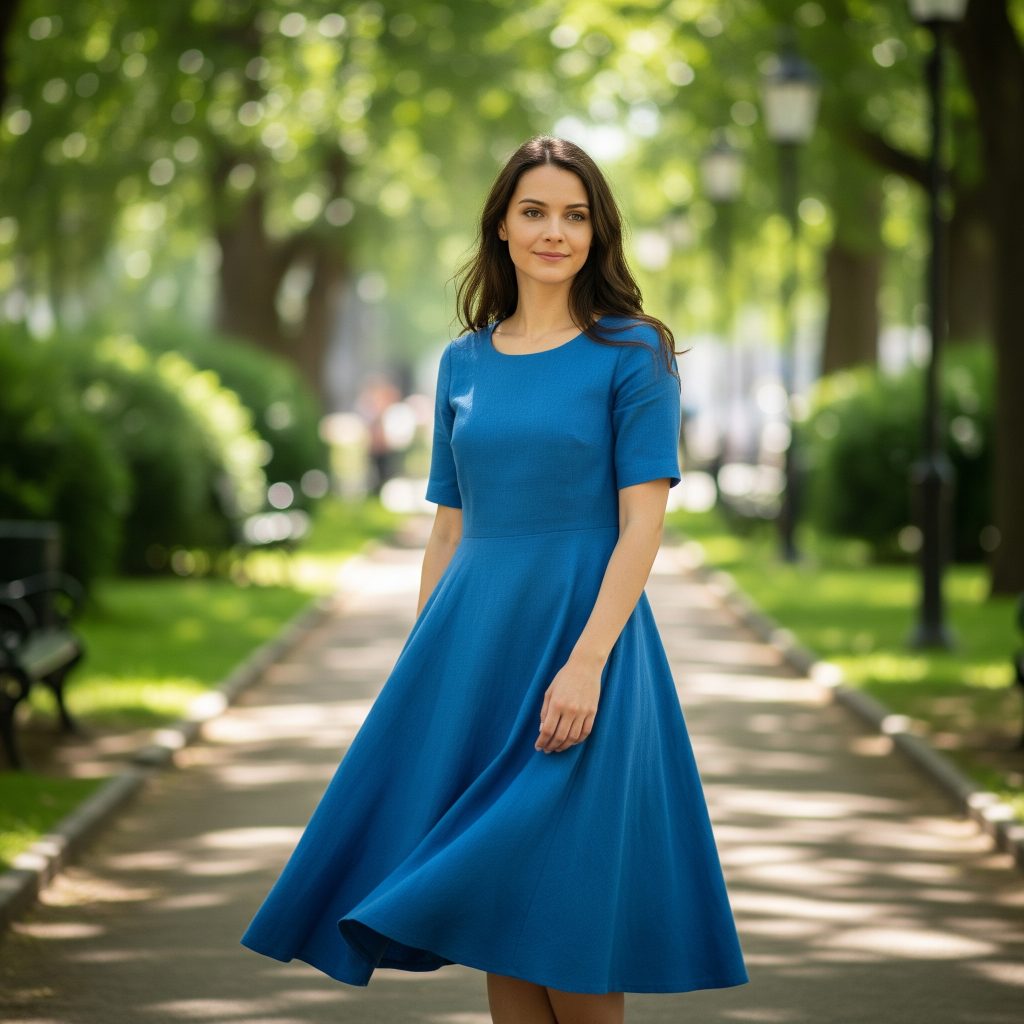
2. The Sheath Dress: Sharp, Sleek, and Confidently Contoured
The Sheath dress is the embodiment of refined sophistication. Unlike the flowing A-line, the sheath is designed to hug the body, tracing its natural curves with precision. It’s a statement of confidence, often seen in professional environments and elegant evening affairs.
Origins and Evolution: While body-skimming dresses have existed in various forms throughout history, the sheath dress as we know it gained prominence in the 1950s and 60s. It was a favorite of style icons like Audrey Hepburn, particularly her iconic Givenchy black sheath in “Breakfast at Tiffany’s.” This era embraced cleaner lines and a more streamlined silhouette, moving away from the elaborate constructions of earlier decades. The sheath represented a new kind of modern femininity – powerful yet graceful.
Why It Endures: The enduring appeal of the sheath dress lies in its simplicity and inherent elegance. It’s minimalist yet impactful, drawing attention to the wearer’s form without excessive adornment. Its tailored fit projects an image of capability and poise. It’s the ultimate canvas for accessories, allowing for personal expression while maintaining a polished base.
Key Characteristics:
- Silhouette: Straight and fitted, designed to trace the body’s lines.
- Fit: Close-fitting from the bust to the hips, often with darts or seams for shaping.
- Length: Typically knee-length or slightly above/below, though longer versions exist for formal wear.
- Necklines & Sleeves: Common necklines include boat neck, scoop neck, V-neck, and jewel neck. Sleeves can be cap, short, three-quarter, or sleeveless.
- Fabric: Best in structured fabrics with some stretch or stability, such as ponte, wool crepe, gabardine, heavy cotton, or thick knits that hold their shape.
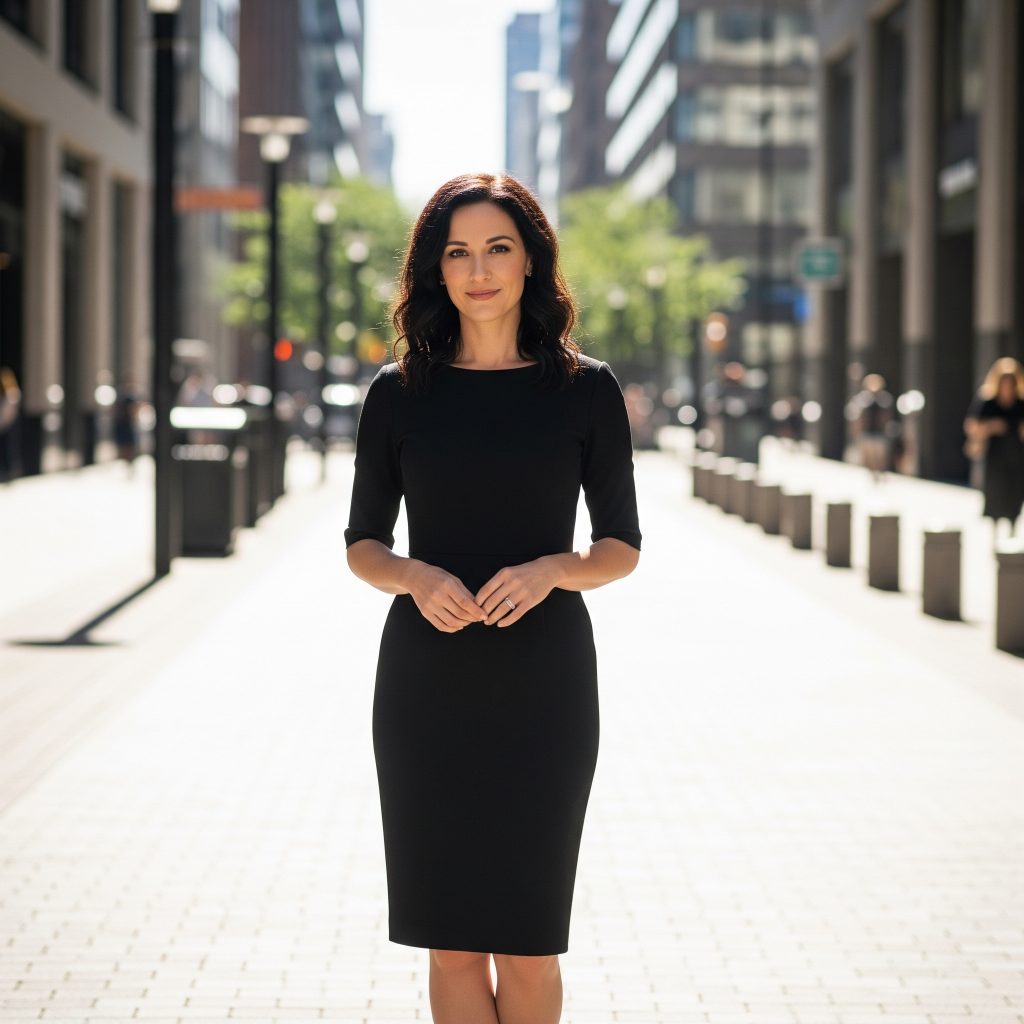
Styling the Sheath: The sheath dress is a workhorse for the discerning woman.
- Boardroom Power: A well-tailored sheath in a neutral color (black, navy, charcoal) paired with a sharp blazer, classic pumps, and minimalist jewelry is the quintessential power outfit for the office.
- Cocktail Hour: Choose a sheath in a luxurious fabric like silk, satin, or lace. Add statement heels, a sparkling clutch, and bold earrings for an elegant evening look. A pop of color or intricate detailing can elevate it further.
- Everyday Chic: For a less formal but still polished look, a knit sheath can be layered under a cardigan or denim jacket with ankle boots or stylish flats.
- Versatility: The sheath dress is ideal for layering; a crisp white shirt can be worn underneath for a smart, modern twist.
Who Should Wear It: The sheath dress is particularly flattering on hourglass figures, as it highlights curves. However, with proper tailoring and fabric choice, it can flatter many body types. For those with straighter figures, a sheath can create the illusion of curves. It’s a must-have for anyone who needs a reliable, sophisticated option for professional settings or elegant events.
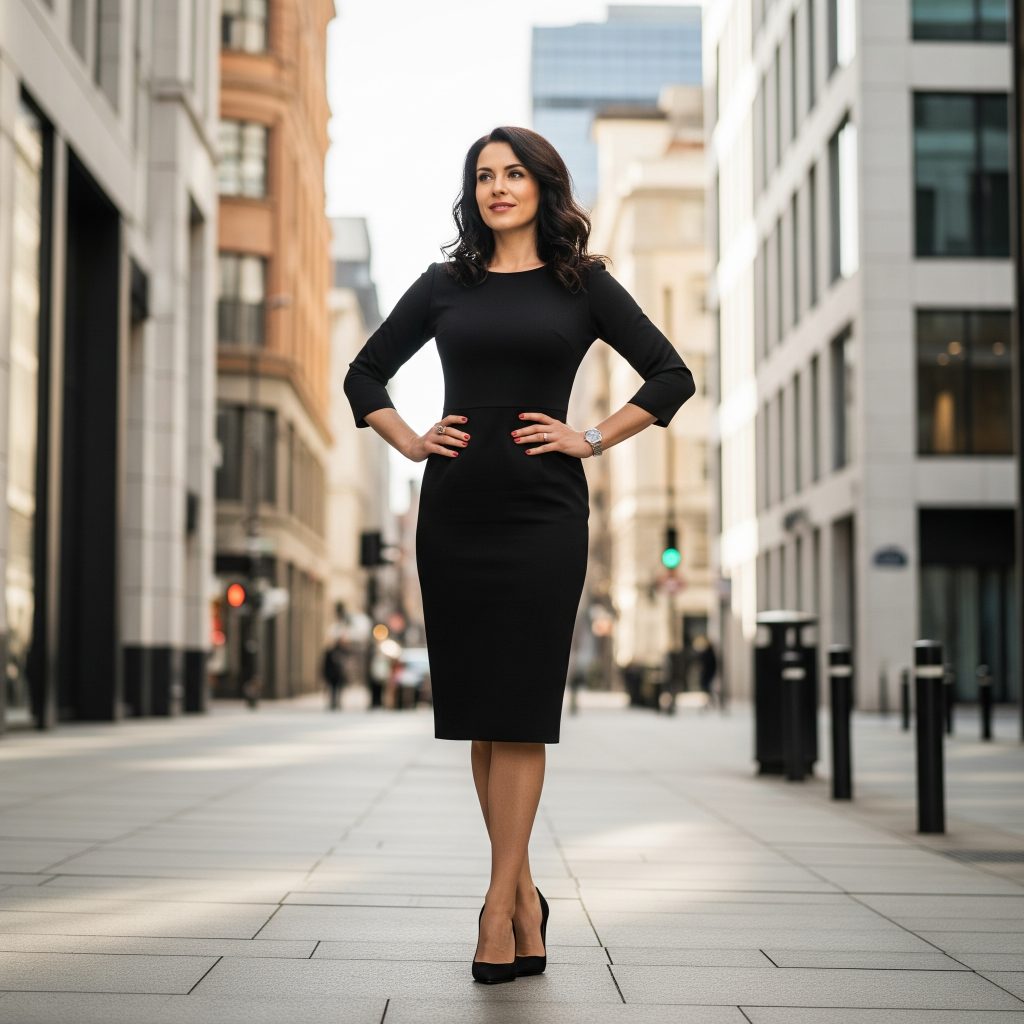
3. The Maxi Dress: Flowing Freedom and Effortless Style
When comfort meets undeniable style, you get the Maxi dress. This floor-length wonder is a champion of relaxed elegance, known for its comfortable, flowing silhouette that makes it a warm-weather staple. It’s the kind of dress you can throw on and instantly look put-together without any fuss.
Origins and Evolution: While long, flowing garments have existed for centuries, the modern maxi dress gained prominence in the late 1960s, a period that embraced bohemian aesthetics and a rejection of more structured fashion. Designers like Oscar de la Renta and Halston introduced sophisticated maxi dresses that quickly became popular. Its popularity waned slightly in the 80s and 90s but surged back with a vengeance in the 2000s, becoming a summer essential. Today, it’s a versatile piece found in both casual and formal iterations.
Why It Endures: The maxi dress endures because it embodies ease. It’s incredibly comfortable, providing full coverage while allowing for maximum airflow, making it perfect for hot climates. Its relaxed fit is forgiving and flattering, gliding over various body shapes. Furthermore, its length creates an inherently dramatic and elegant silhouette, even in the simplest of designs. It’s a complete outfit in one go, requiring minimal styling.
Key Characteristics:
- Silhouette: Long, flowing, and reaches the ankles or floor.
- Fit: Generally relaxed from the bust down, though some may have a fitted bodice or elasticated waist.
- Length: Always ankle-length or floor-length.
- Necklines & Sleeves: Extremely varied: strapless, halter, spaghetti strap, short sleeve, long sleeve, V-neck, scoop neck, etc.
- Fabric: Typically made from lightweight, breathable fabrics like cotton, jersey, rayon, linen, or chiffon, especially for casual styles. More formal maxis might use silk or satin.
Styling the Maxi: The maxi dress is the epitome of effortless chic.
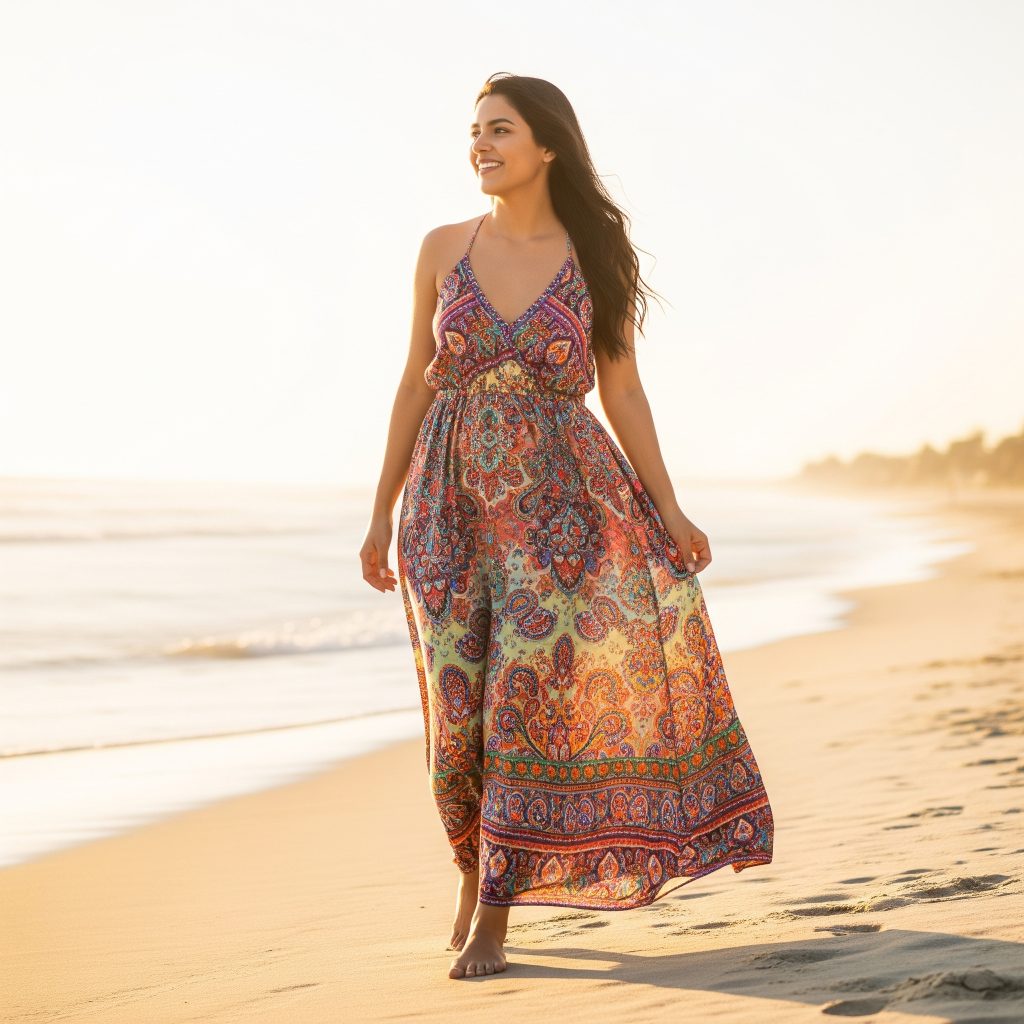
- Casual Daytime: A jersey or cotton maxi dress with flat sandals, a wide-brimmed hat, and oversized sunglasses is the ultimate relaxed summer look for beach days, brunches, or leisurely strolls.
- Boho Vibes: Pair a patterned or embroidered maxi with espadrilles, layered necklaces, and a fringe bag for a free-spirited, bohemian aesthetic.
- Elevated Casual: Cinch a casual maxi with a stylish belt to define the waist. Add wedges or block heels and a denim or light utility jacket for a slightly more structured daytime outfit.
- Formal Occasions: A maxi dress in a luxurious fabric (silk, satin, or embellished chiffon) with a more structured bodice and elegant detailing (like pleats or ruffles) can serve as stunning formal wear. Pair with heels, statement jewelry, and a clutch.
Who Should Wear It: Anyone seeking comfort and effortless style. Taller individuals can rock any maxi length, while petite women might opt for shorter maxi styles or pair them with wedges/heels to avoid overwhelming their frame. Its relaxed fit makes it universally appealing.
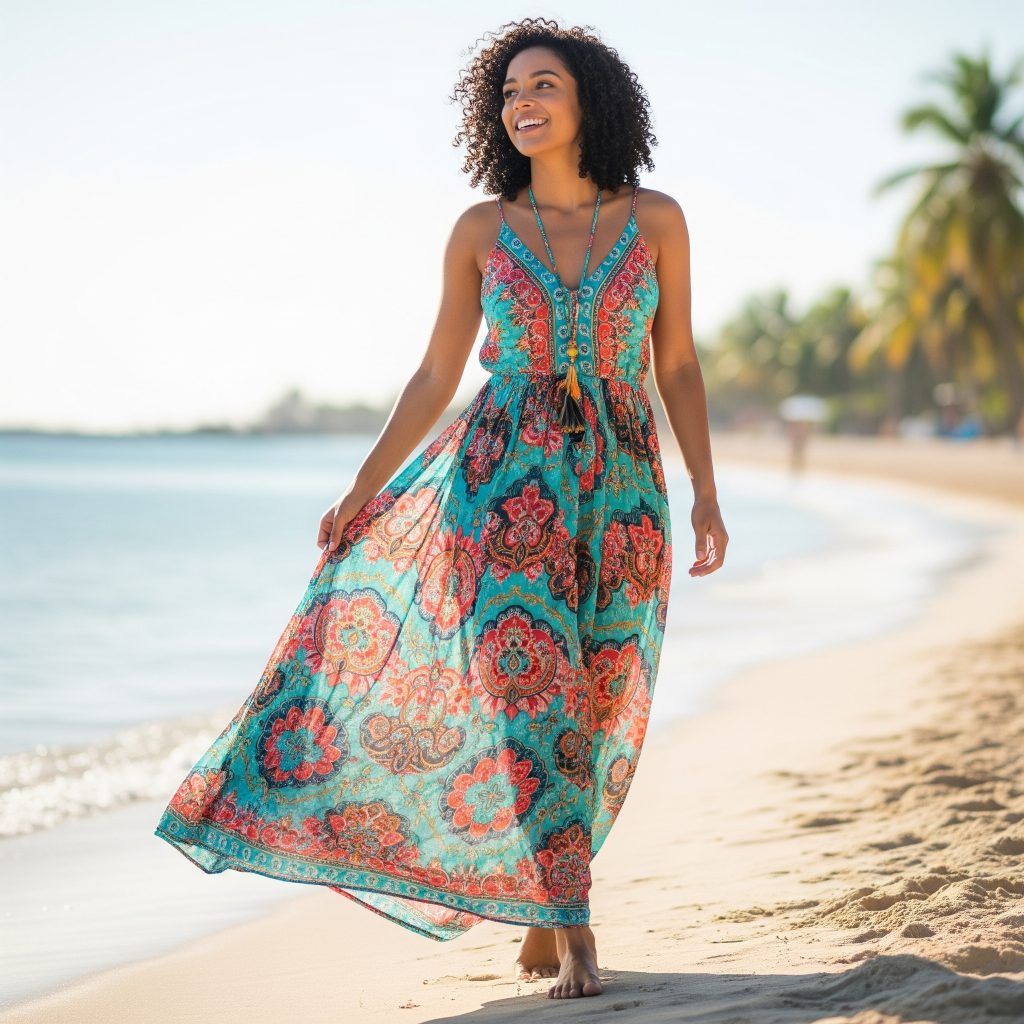
4. The Midi Dress: The Modern Power Player of Versatility
The Midi dress is the unsung hero of the modern wardrobe. Striking a perfect balance between the formality of a maxi and the casualness of a mini, the midi offers sophistication and adaptability that few other dress lengths can match. Its hemline, falling anywhere from below the knee to just above the ankle, is its defining feature and its greatest strength.
Origins and Evolution: While midi-length skirts and dresses existed throughout fashion history, the midi dress truly came into its own in the 1940s and 50s, embodying a sense of post-war practicality and elegance. It saw a resurgence in the 1970s and, after a period of mini-dress dominance, has made a powerful comeback in recent years, becoming a fashion-forward staple. Its current popularity reflects a desire for chic comfort and versatile pieces that transition seamlessly from day to night, office to social events.
Why It Endures: The midi dress is the epitome of versatility. It’s long enough to be modest and professional but short enough to feel contemporary and stylish. This unique length allows it to be dressed up or down with incredible ease, making it suitable for almost any occasion. It offers a sophisticated silhouette that can flatter a multitude of body types by providing coverage while still highlighting the legs.
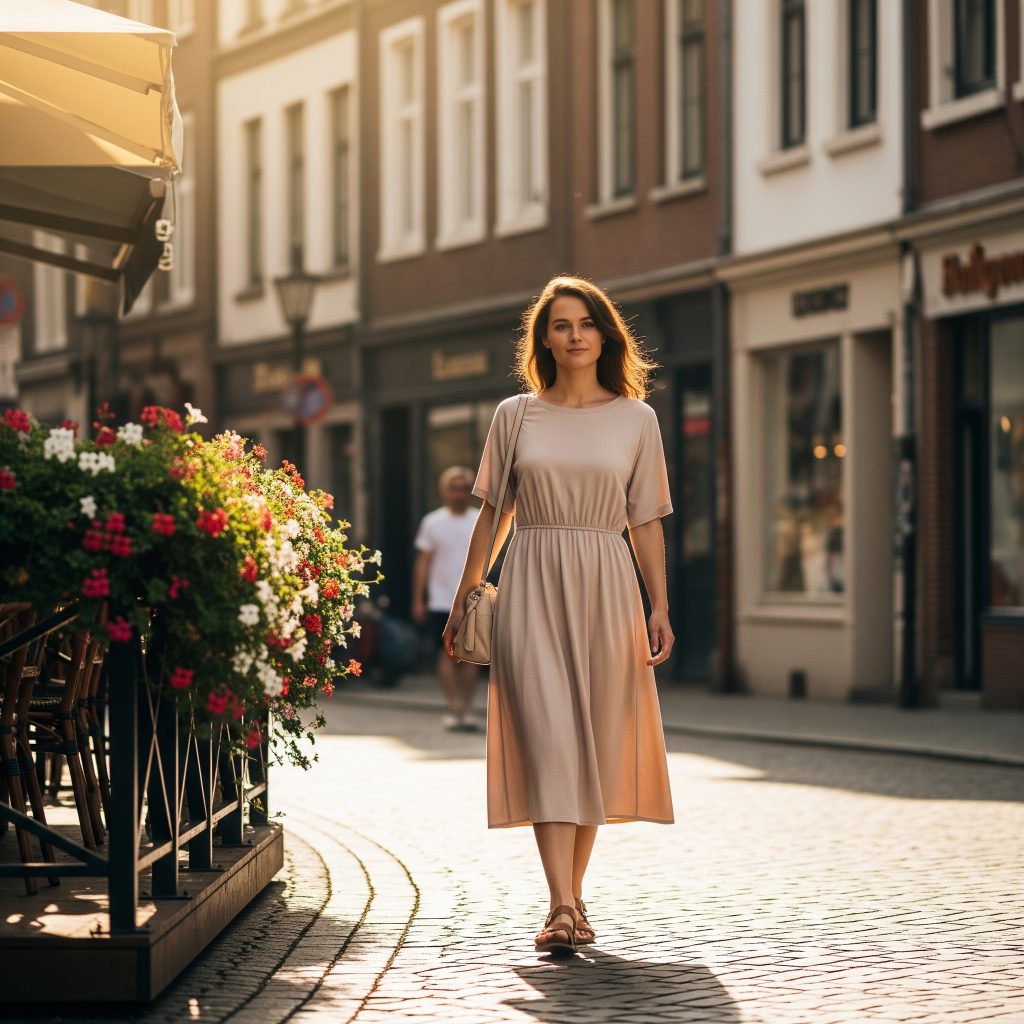
Key Characteristics:
- Silhouette: Can vary widely – A-line, sheath, fit-and-flare, pleated, slip, or wrap styles.
- Fit: Can be fitted, relaxed, or flowing, depending on the style.
- Length: The hem falls between below the knee and just above the ankle.
- Necklines & Sleeves: All variations are possible – from high necks and long sleeves to strapless and sleeveless.
- Fabric: Works well in a broad spectrum of fabrics, from light cottons and linens for summer to knits, wool blends, and heavier silks for cooler weather or more formal looks.
Styling the Midi: The midi dress is your secret weapon for looking effortlessly polished.
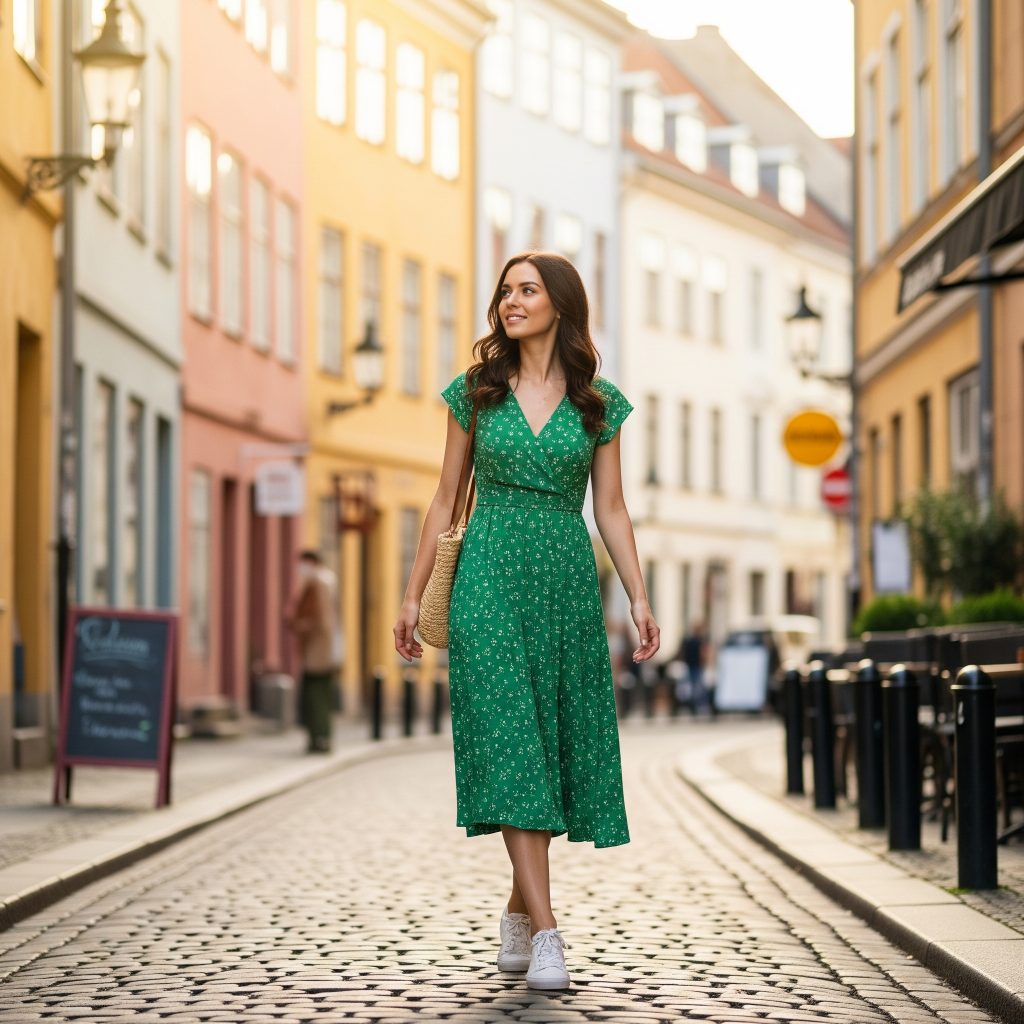
- Office Professional: A tailored midi sheath or A-line dress in a structured fabric with a blazer and closed-toe heels is impeccably professional.
- Smart Casual: A knit or cotton midi dress with white sneakers or stylish flats, topped with a denim jacket or an oversized cardigan, creates a comfortable yet chic everyday outfit.
- Evening Glamour: Opt for a midi dress in luxurious fabrics like silk, satin, or lace with intricate details. Pair with strappy heels, a clutch, and statement jewelry for cocktail parties or semi-formal events. A fit-and-flare midi can be particularly enchanting.
- Seasonless Style: Layering is key with midi dresses. In colder months, pair with ankle boots or tall boots, a cozy sweater or tailored coat. In warmer weather, sandals and lighter accessories are perfect.
Who Should Wear It: The midi dress is genuinely versatile. For petite frames, choosing a midi that hits at the narrowest part of the calf can be elongating, and pairing with heels can add height. Taller individuals can effortlessly wear any midi length. Its diverse range of silhouettes means there’s a midi dress out there to flatter every body shape and personal style.
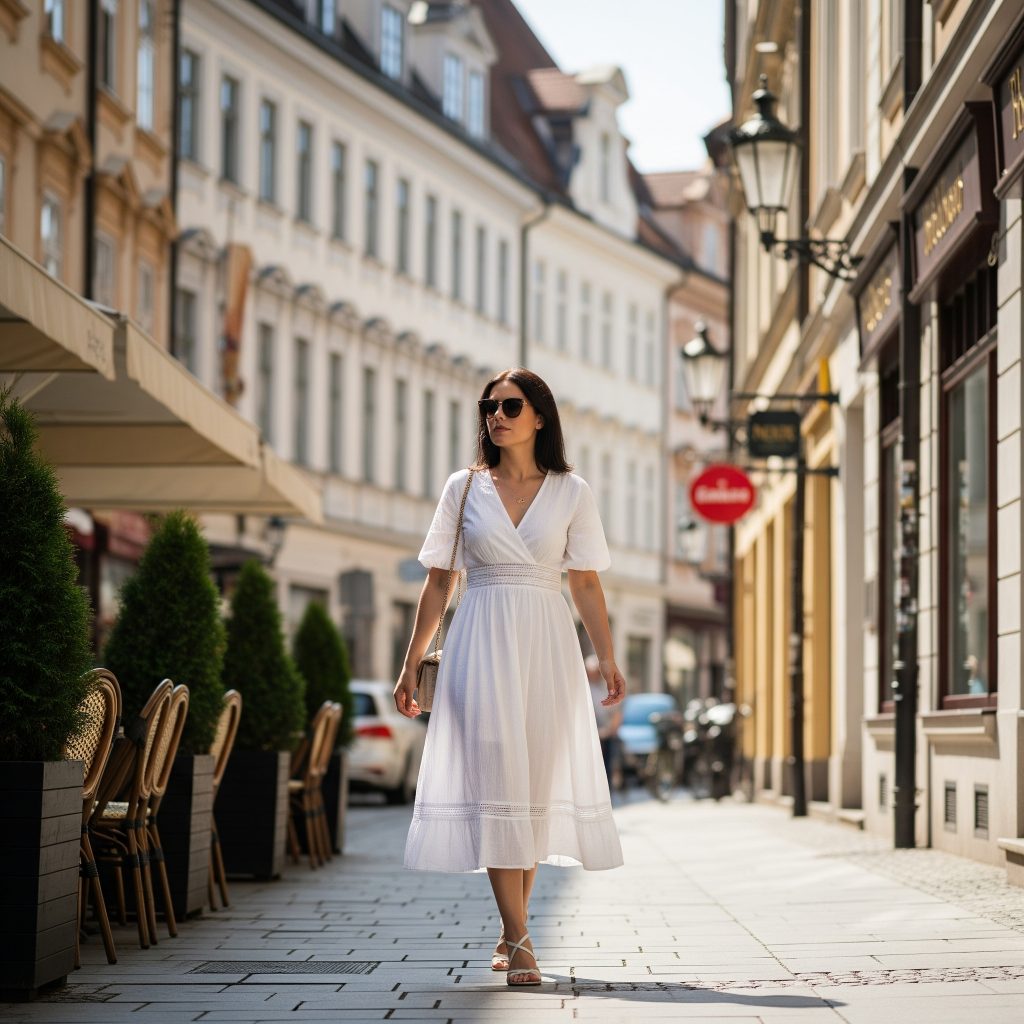
5. The Bodycon Dress: Bold, Confident, and Curve-Embracing
The Bodycon dress, short for “body-conscious,” is not for the faint of heart. This dress is designed with a singular purpose: to celebrate the curves of the wearer by hugging every inch of the silhouette. It’s a bold statement, a garment that demands confidence and attention, often seen in club scenes, parties, and fashion-forward events.
Origins and Evolution: While form-fitting garments have always existed, the modern bodycon dress exploded onto the scene in the late 1980s and early 1990s. Designers like Hervé Léger popularized the “bandage dress,” which is a distinct type of bodycon constructed from strips of fabric designed to shape and sculpt the body. The rise of pop culture and celebrity influence further cemented its status as a daring and provocative choice, synonymous with nightlife and youthful exuberance. Its popularity has waxed and waned, but it remains a staple for those who want to make a strong visual impact.
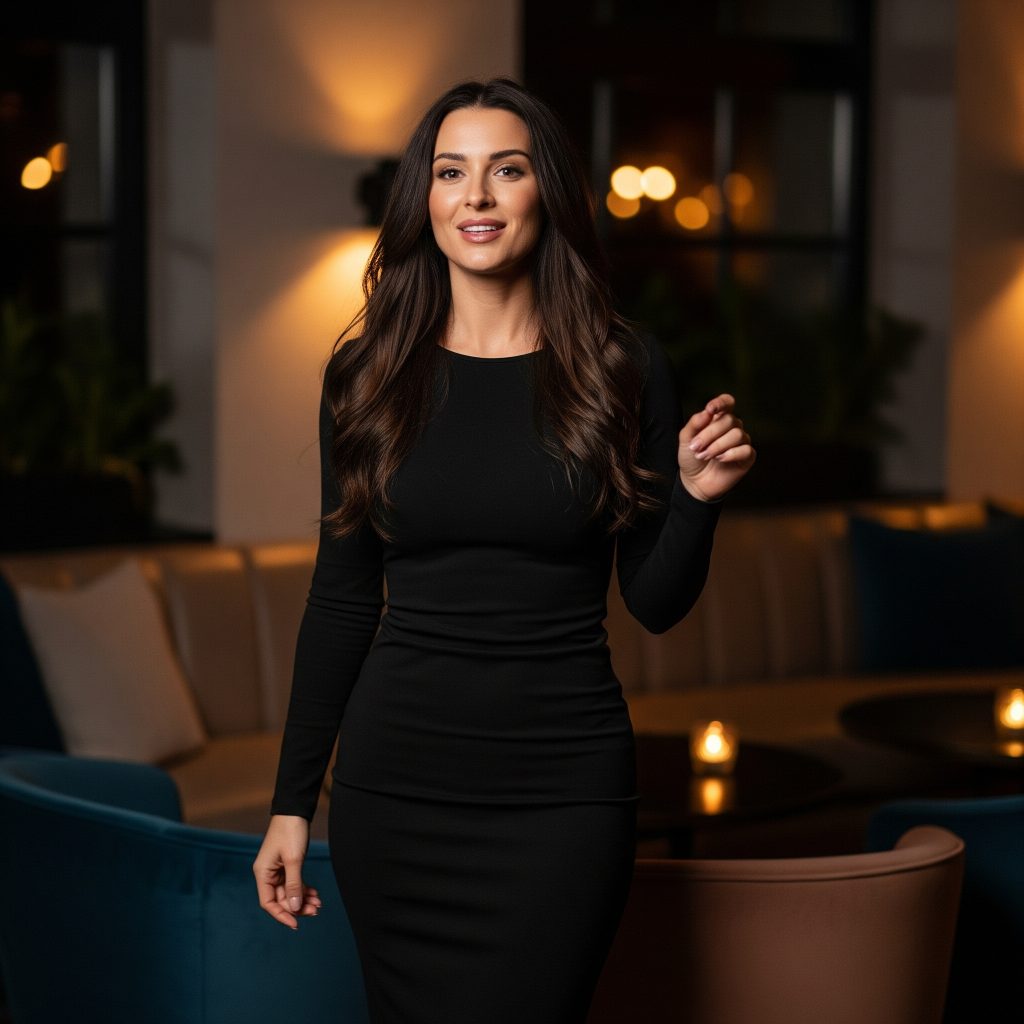
Why It Endures: The bodycon dress endures because it’s unapologetically sensual and empowering for those who choose to wear it. It’s a celebration of the female form, offering a sleek, defined silhouette that accentuates curves. In a world of oversized and relaxed fits, the bodycon stands out by making a clear, confident statement. It’s a dress that doesn’t just clothe the body; it becomes a second skin, moving with and highlighting every contour.
Key Characteristics:
- Silhouette: Extremely fitted, designed to cling tightly to the body from top to bottom.
- Fit: Sculpting and contouring. Often made with stretch fabrics to allow movement while maintaining tightness.
- Length: Varies widely, from mini to midi to occasionally maxi, though mini and midi are most common.
- Necklines & Sleeves: Can feature any neckline (high neck, scoop, V-neck, off-the-shoulder) and sleeve length (sleeveless, long sleeve).
- Fabric: Typically made from highly elastic fabrics like jersey, spandex blends, ponte, or specialized “bandage” materials. The stretch is crucial for comfort and fit.
Styling the Bodycon: The bodycon dress is a statement piece that requires careful styling to avoid looking overdone or underdressed for the occasion.
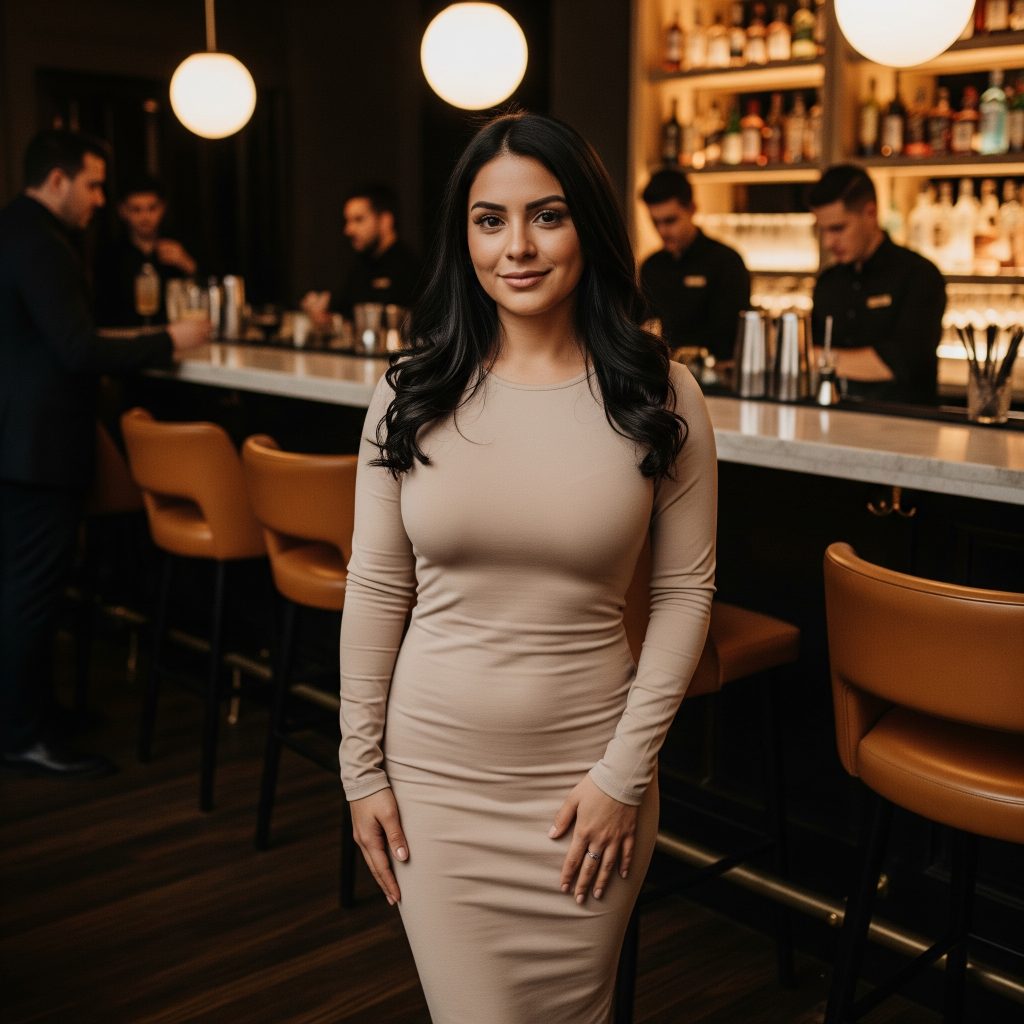
- Night Out: This is the bodycon’s natural habitat. Pair a mini or midi bodycon with high heels, a clutch, and bold jewelry. A leather jacket can add an edgy touch.
- Elevated Casual: For a more toned-down but still chic look, a midi bodycon can be styled with sneakers and an oversized denim jacket or a bomber jacket. This creates a stylish contrast.
- Layering: For a sophisticated edge, a bodycon dress can be layered under a tailored blazer or a long duster coat, especially for midi lengths.
- Understated Glam: Choose a bodycon in a sophisticated color like black, navy, or deep jewel tones. Minimalist accessories and elegant heels can elevate it for more upscale events.
Who Should Wear It: The bodycon dress is often associated with those who are confident in showcasing their figure. While it can be worn by various body types, confidence is the key accessory. For those who want to accentuate their hourglass shape or create a dramatic silhouette, the bodycon delivers. Proper undergarments are often essential for a smooth finish.
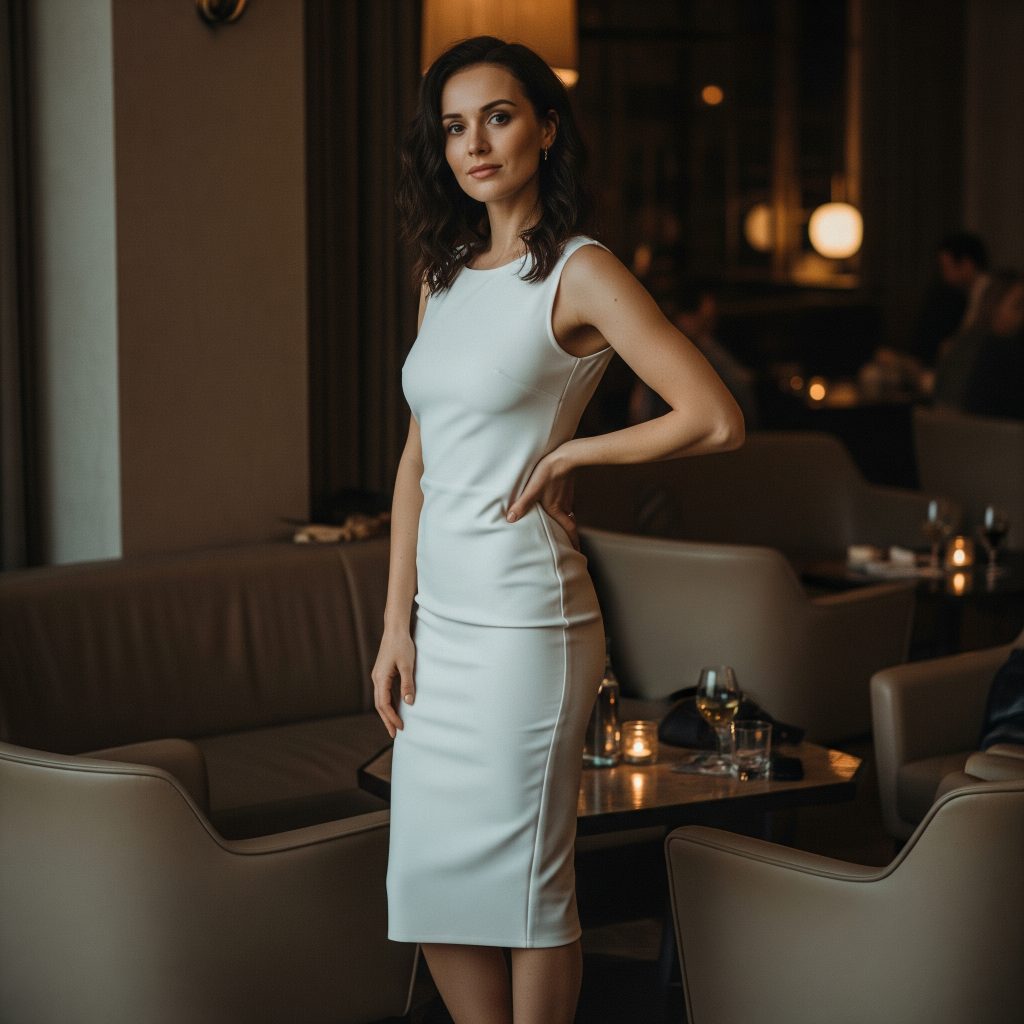
6. The Wrap Dress: The Flattering Phenomenon of Adjustable Elegance
The Wrap dress is a true marvel of design – universally flattering, endlessly versatile, and effortlessly chic. Its genius lies in its simple construction: one side wraps over the other, cinching at the waist to create a V-neckline and an adjustable fit. This isn’t just a dress; it’s a fashion philosophy based on comfort and adaptable style.
Origins and Evolution: While wrap-style garments have existed in various forms for centuries across cultures, the modern wrap dress was famously popularized by Diane von Fürstenberg in the early 1970s. Her jersey wrap dress became an instant sensation, empowering women with a comfortable, stylish, and easy-to-wear garment that transitioned seamlessly from day to evening. It symbolized liberation and practicality in women’s fashion, making it an icon of the era and ensuring its place in fashion history. Its appeal has never waned.
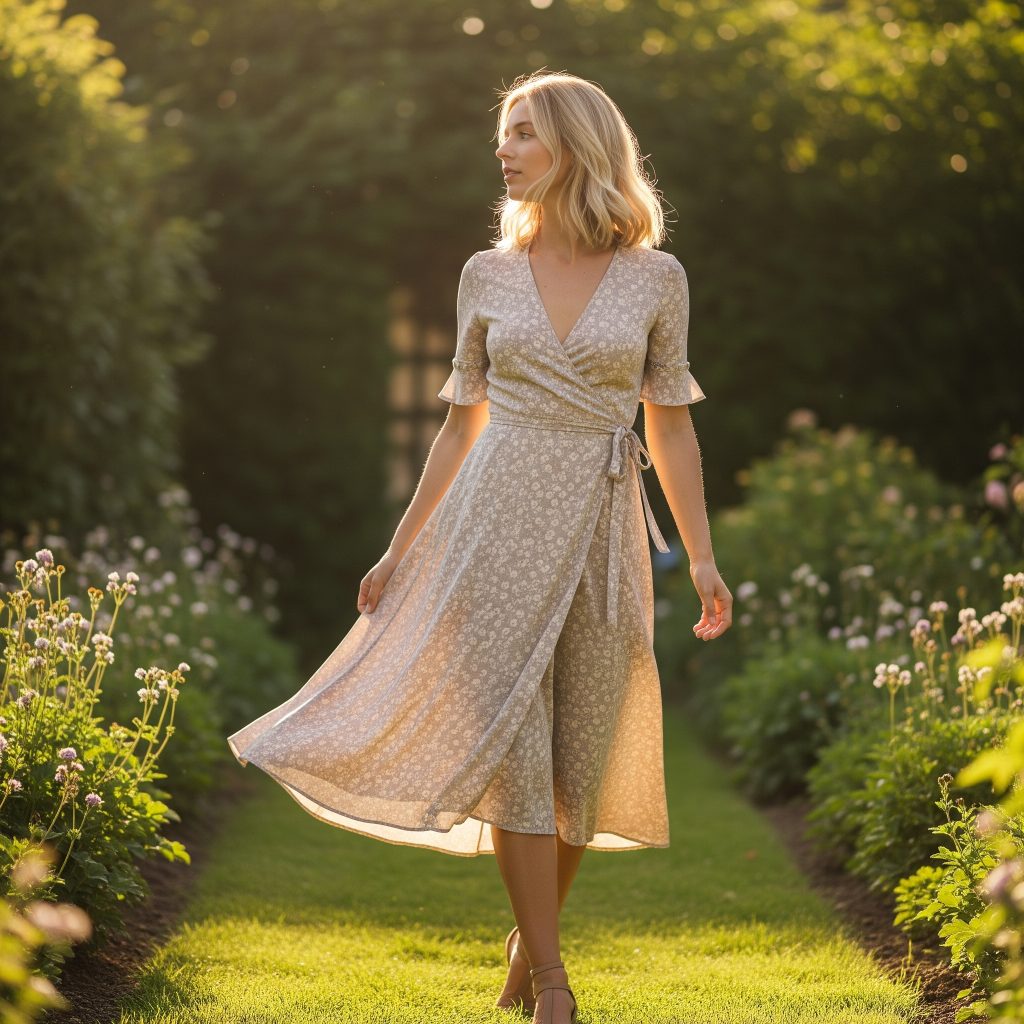
Why It Endures: The enduring popularity of the wrap dress stems from its unparalleled ability to flatter virtually any body type. The V-neckline elongates the neck and draws attention upwards, while the cinched waist creates an hourglass silhouette, regardless of your natural shape. The adjustable tie allows for a custom fit, accommodating weight fluctuations and providing comfort. Its flowing skirt skims over the hips and thighs, offering a graceful movement. It’s the ultimate combination of elegance, comfort, and adaptability.
Key Characteristics:
- Silhouette: Created by one side wrapping over the other, forming a V-neck and a defined waist.
- Fit: Adjustable at the waist with a tie, offering a custom and flattering fit.
- Length: Most commonly found in midi or maxi lengths, but mini wrap dresses also exist.
- Necklines & Sleeves: Naturally forms a V-neckline. Sleeves can vary from cap to short, three-quarter, or long.
- Fabric: Often made from soft, flowing fabrics like jersey, silk, rayon, or lightweight cotton that drape beautifully.
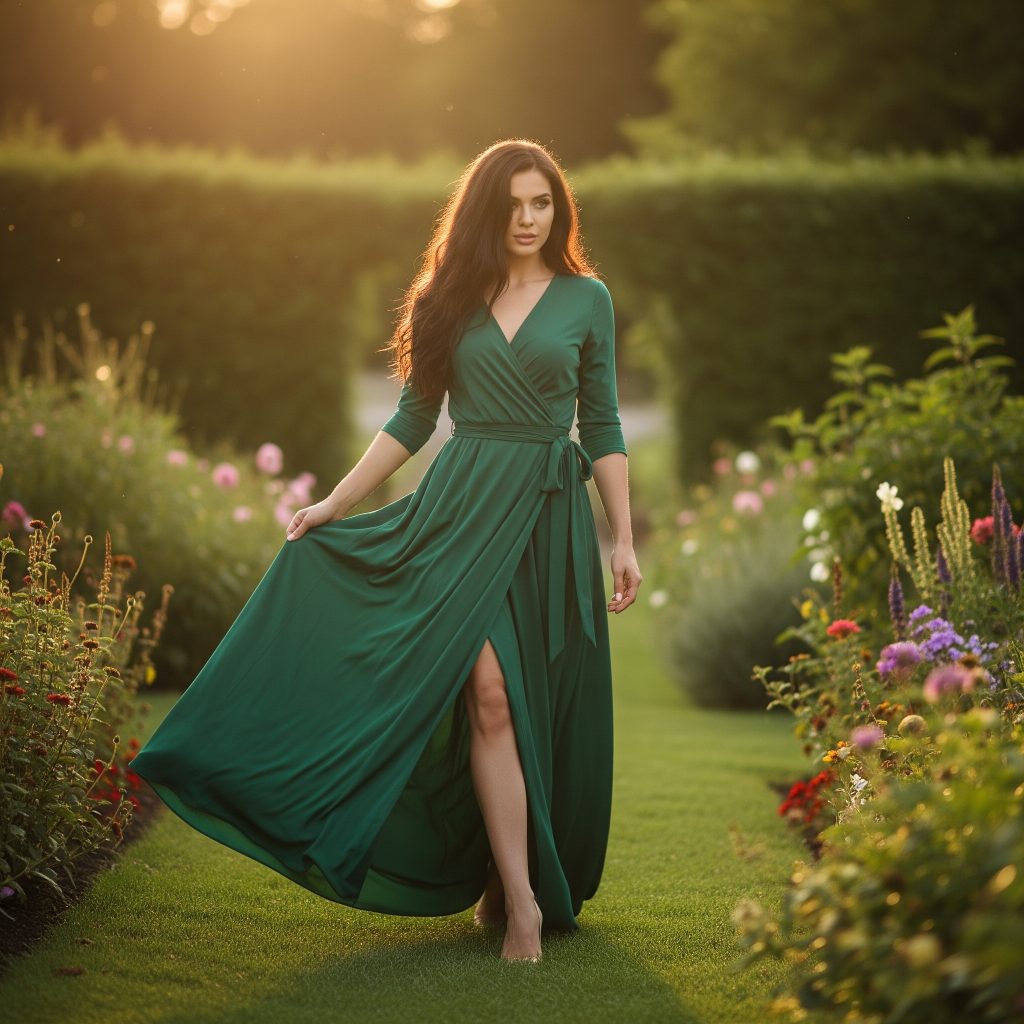
Styling the Wrap Dress: The wrap dress is your go-to for effortless polish.
- Office Ready: A midi wrap dress in a solid color or a subtle print, paired with pumps or elegant ankle boots, is perfect for a professional setting. The V-neck can be modest depending on the wrap.
- Weekend Brunch: A floral or brightly patterned wrap dress with sandals or espadrilles and a straw bag creates a charming and relaxed look.
- Evening Out: Choose a wrap dress in luxurious silk, satin, or velvet. Add strappy heels, delicate jewelry, and a clutch for a sophisticated and alluring evening ensemble.
- Versatility: The wrap dress is fantastic for travel due to its comfort and resistance to wrinkling (especially in jersey). It can be styled casually with sneakers or dressed up for almost any occasion.
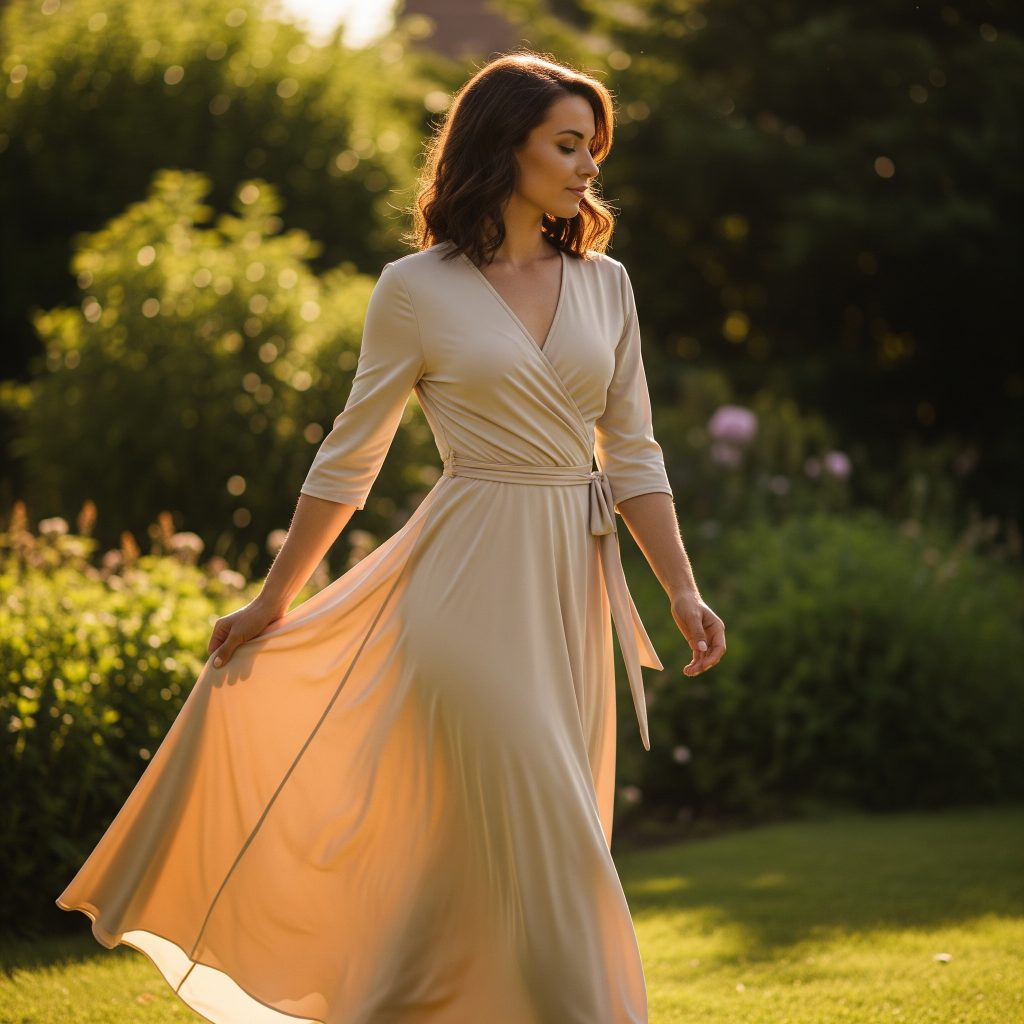
Who Should Wear It: Everyone. The wrap dress is genuinely one of the most universally flattering dress styles. It accentuates the waist, creates curves, and provides a customizable fit that makes it a favorite for women of all shapes and sizes. If you need a reliable, stylish, and comfortable dress, the wrap dress is your champion.
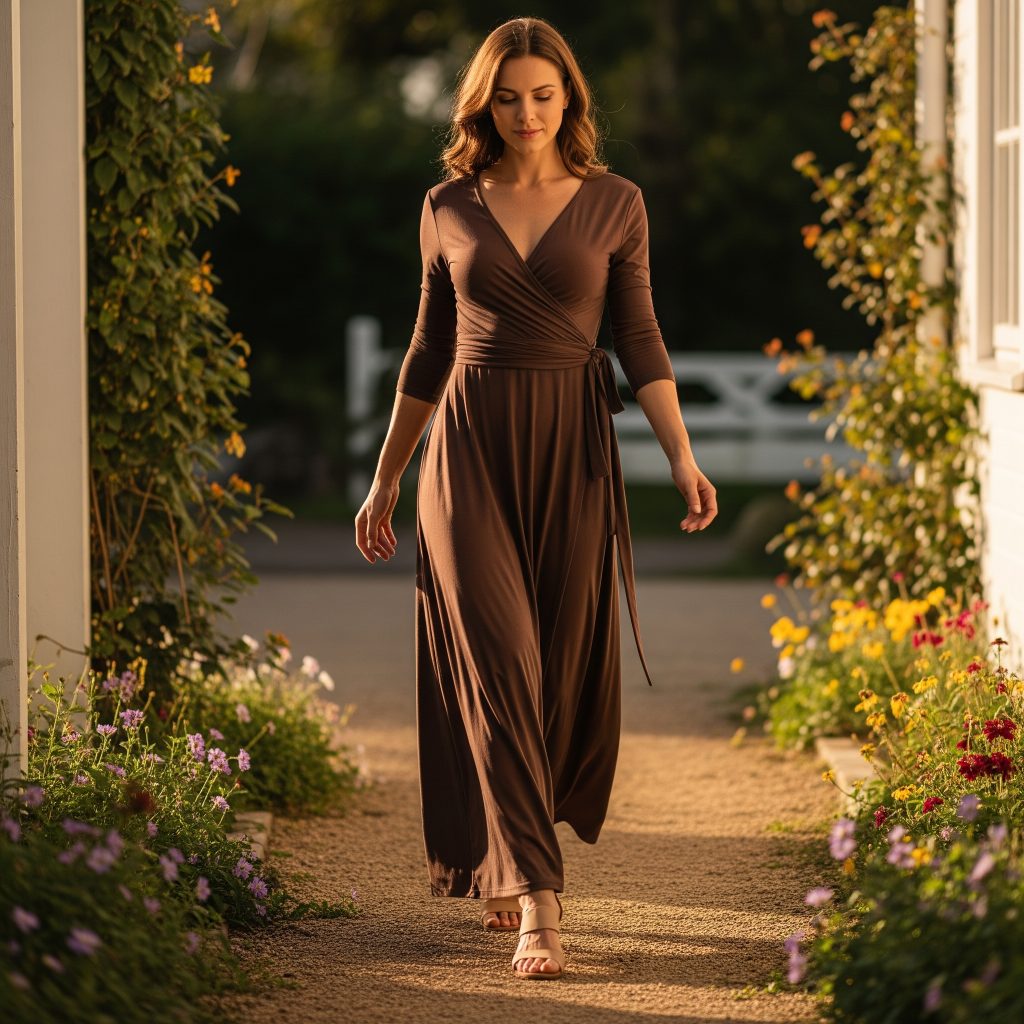
7. The Empire Waist Dress: Graceful Draping and Romantic Flair
The Empire Waist dress is defined by its distinct silhouette: a fitted bodice that ends just below the bust, from which the rest of the dress flows loosely and gracefully to the hem. This style exudes a timeless charm, offering a silhouette that is both comfortable and inherently romantic. It’s a design that celebrates elegance through understated beauty.
Origins and Evolution: The Empire waist silhouette reached its peak popularity during the late 18th and early 19th centuries, notably during the Regency era (think Jane Austen novels). It was a radical departure from the corseted, voluminous styles of previous periods, inspired by the flowing, column-like garments of ancient Greece and Rome. This era embraced a more natural, less restrictive form, symbolizing a shift towards classical ideals in fashion. While its peak was centuries ago, the Empire waist remains a beloved choice for its flattering fit and ethereal quality, frequently reinterpreted in modern fashion.
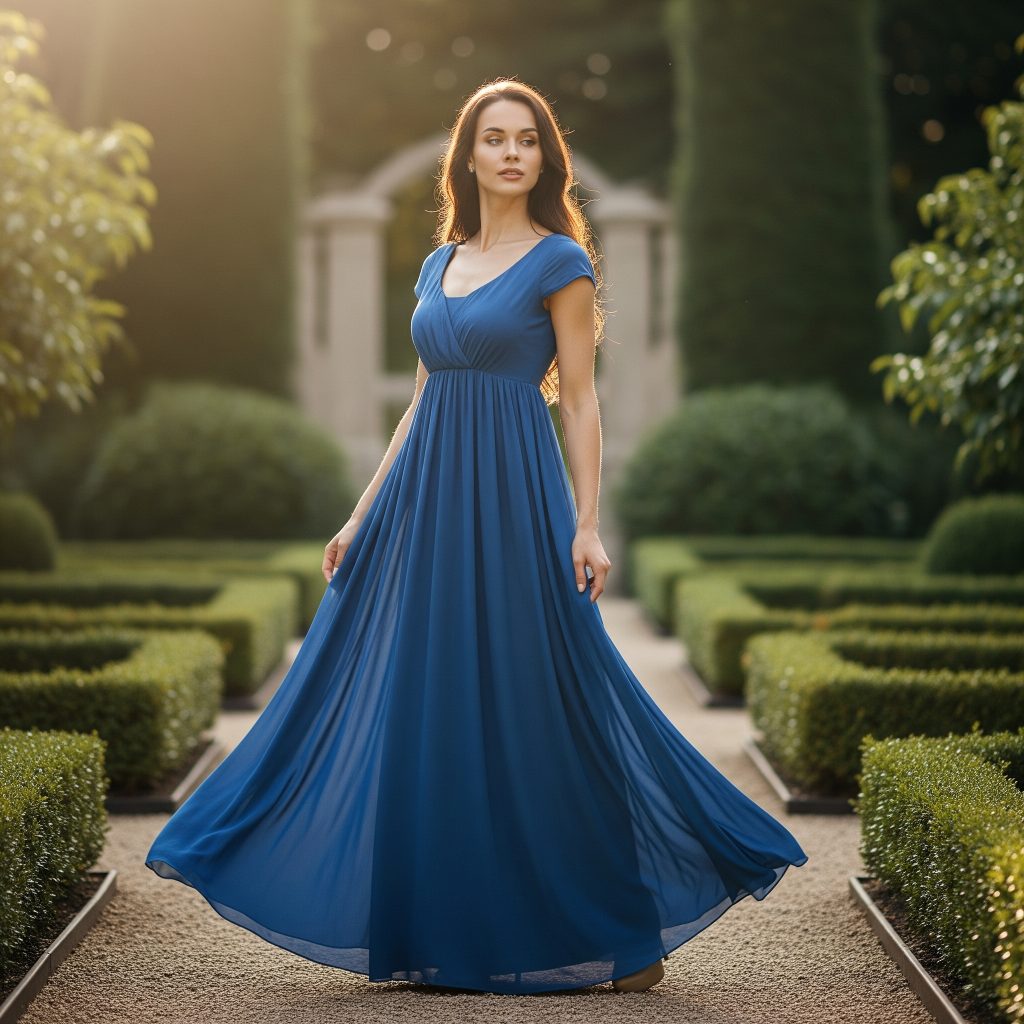
Why It Endures: The enduring appeal of the Empire waist dress lies in its ability to elongate the body and create a graceful, flowing line. By drawing attention to the slimmest part of the torso (just under the bust), it creates a high waistline that makes the wearer appear taller and leaner. The loose, flowing skirt effortlessly skims over the stomach, hips, and thighs, offering comfort and a forgiving fit. It’s a style that feels inherently soft, feminine, and ethereal.
Key Characteristics:
- Silhouette: Fitted bodice that ends directly under the bust, with a loose, flowing skirt.
- Fit: Fitted on top, relaxed and flowing below the bust.
- Length: Can range from mini to maxi, though midi and maxi lengths are most common to enhance the flowing effect.
- Necklines & Sleeves: Often features high necklines, scoop necks, or square necks to complement the high waist. Sleeves can be short, puffed, cap, or sleeveless.
- Fabric: Best suited for lightweight, draping fabrics like chiffon, silk, rayon, jersey, or soft cottons that flow beautifully from the bust.
Styling the Empire Waist: The Empire waist dress lends itself to a romantic and elegant aesthetic.

- Casual & Comfortable: A cotton or jersey Empire waist maxi dress with flat sandals and delicate jewelry is perfect for a relaxed summer day, beach vacation, or outdoor picnic.
- Romantic Evening: Opt for an Empire waist dress in silk, chiffon, or lace with delicate embellishments. Pair with elegant heels and understated jewelry for a graceful look suitable for formal dinners, weddings, or galas.
- Bohemian Flair: An Empire waist dress with floral prints or embroidery, combined with artisanal sandals and layered necklaces, evokes a dreamy, bohemian vibe.
- Maternity Wear: Due to its comfortable and accommodating fit around the midsection, the Empire waist dress is a highly popular and flattering choice for expectant mothers.
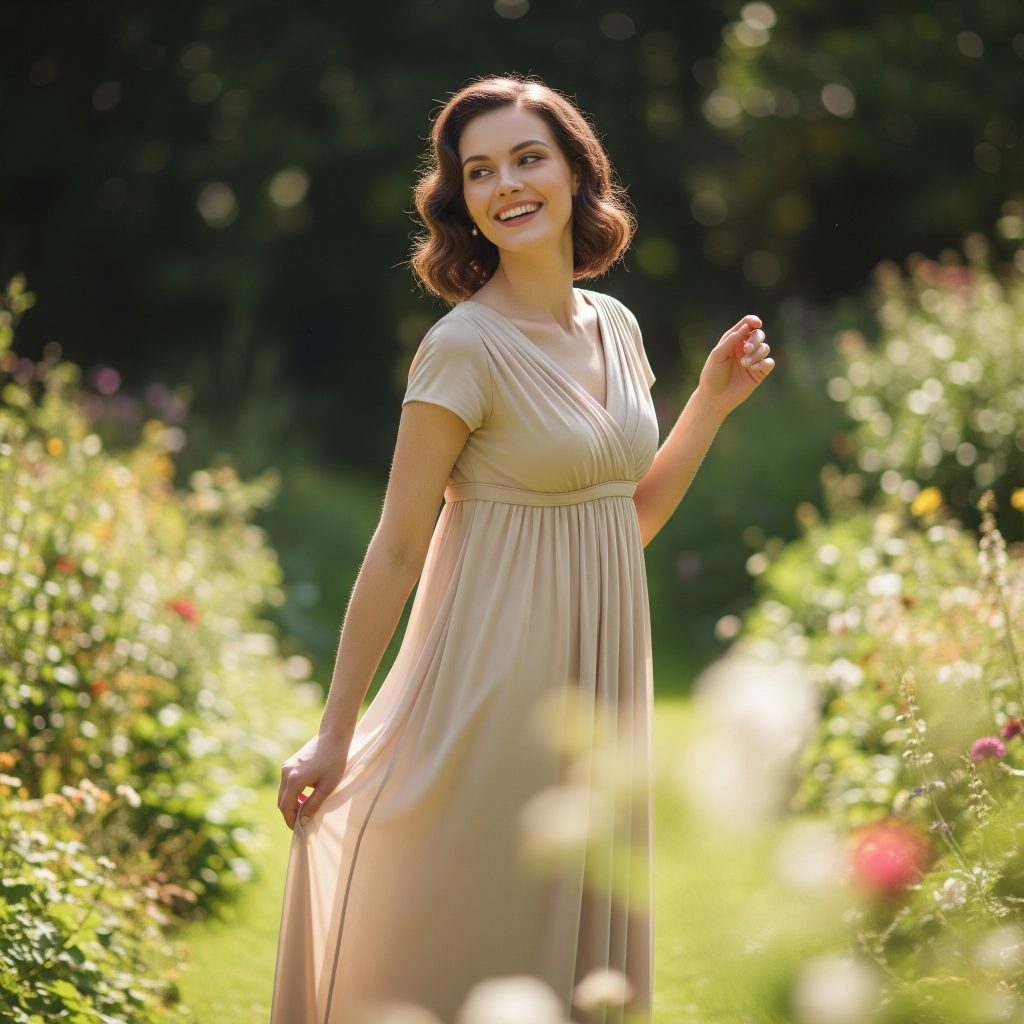
Who Should Wear It: The Empire waist dress is exceptionally flattering for many body types. It’s particularly effective for those who want to draw attention away from the midsection or hips, as the flowing skirt camouflages these areas. It also helps to elongate the figure, making it a good choice for petite individuals when paired with appropriate footwear. It is also a classic choice for maternity wear due to its comfort and flattering design.
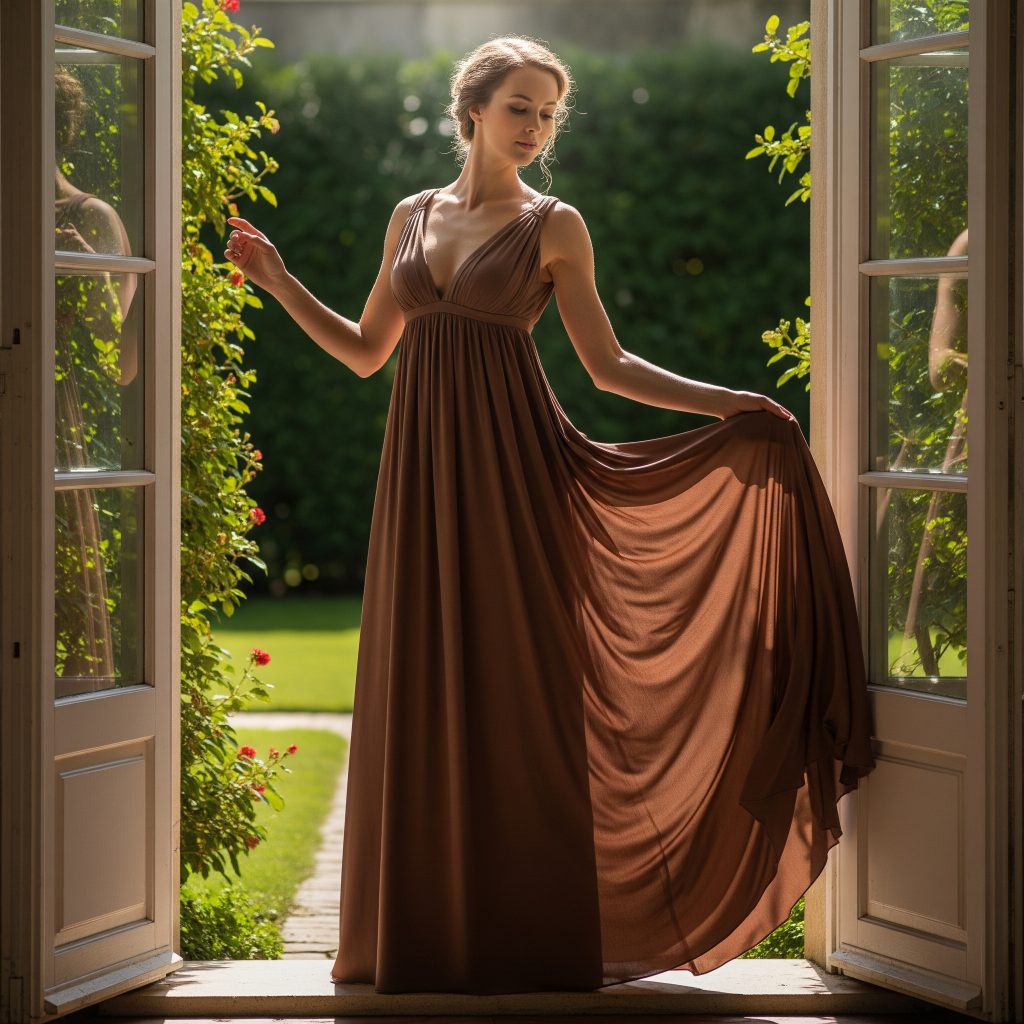
8. The Slip Dress: Understated Allure and Effortless Cool
Once confined to the bedroom as lingerie, the Slip dress has bravely stepped out into the spotlight, becoming a symbol of understated allure and effortless cool. Its simple, straight cut, delicate fabrics, and spaghetti straps give it a minimalist yet incredibly sensual appeal, making it a versatile piece for both casual and elevated looks.
Origins and Evolution: The slip dress as outerwear first gained significant traction in the 1990s, particularly with the rise of grunge and minimalist fashion. Supermodels like Kate Moss famously championed the look, wearing silk slips not under their clothes, but as their clothes. This was a rebellious act, blurring the lines between innerwear and outerwear and embracing a raw, unapologetic femininity. While its peak might have been in the 90s, its timeless simplicity and undeniable comfort have ensured its continued presence in fashion.
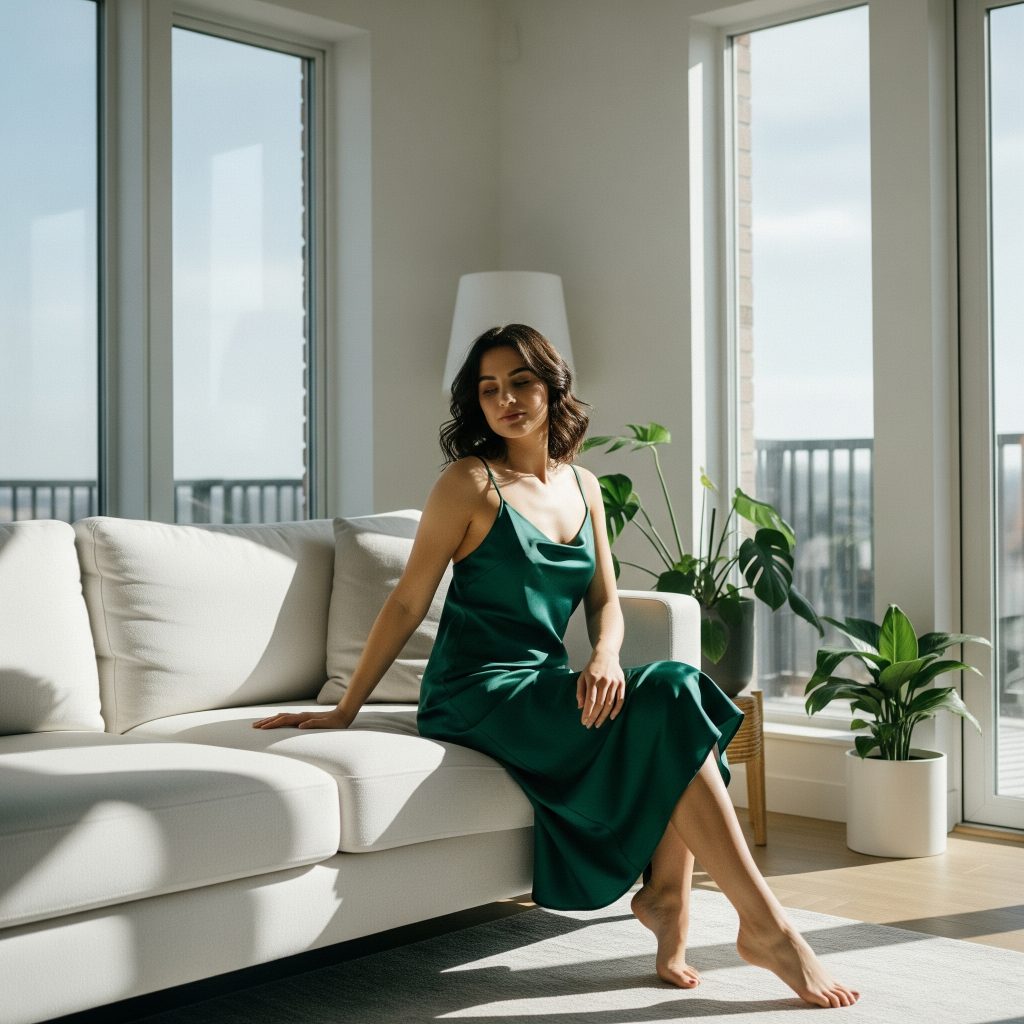
Why It Endures: The enduring appeal of the slip dress lies in its paradox: it’s both revealing and elegant, simple yet impactful. Its fluid nature allows it to drape beautifully over the body, providing comfort without sacrificing sophistication. It’s incredibly easy to wear and layer, making it a versatile addition to any wardrobe. The delicate straps and often luxurious fabrics lend it an air of subtle glamour, hinting at sensuality without being overtly provocative.
Key Characteristics:
- Silhouette: Straight or slightly A-line cut, resembling a traditional lingerie slip.
- Fit: Relaxed yet form-skimming, designed to drape fluidly over the body.
- Length: Can range from mini to midi to maxi, with midi being a popular length for versatility.
- Necklines & Sleeves: Typically features a scoop neck, cowl neck, or V-neck, with thin spaghetti straps. Sleeveless by design.
- Fabric: Most commonly made from luxurious, delicate fabrics like silk, satin, charmeuse, or sometimes soft rayon or velvet.
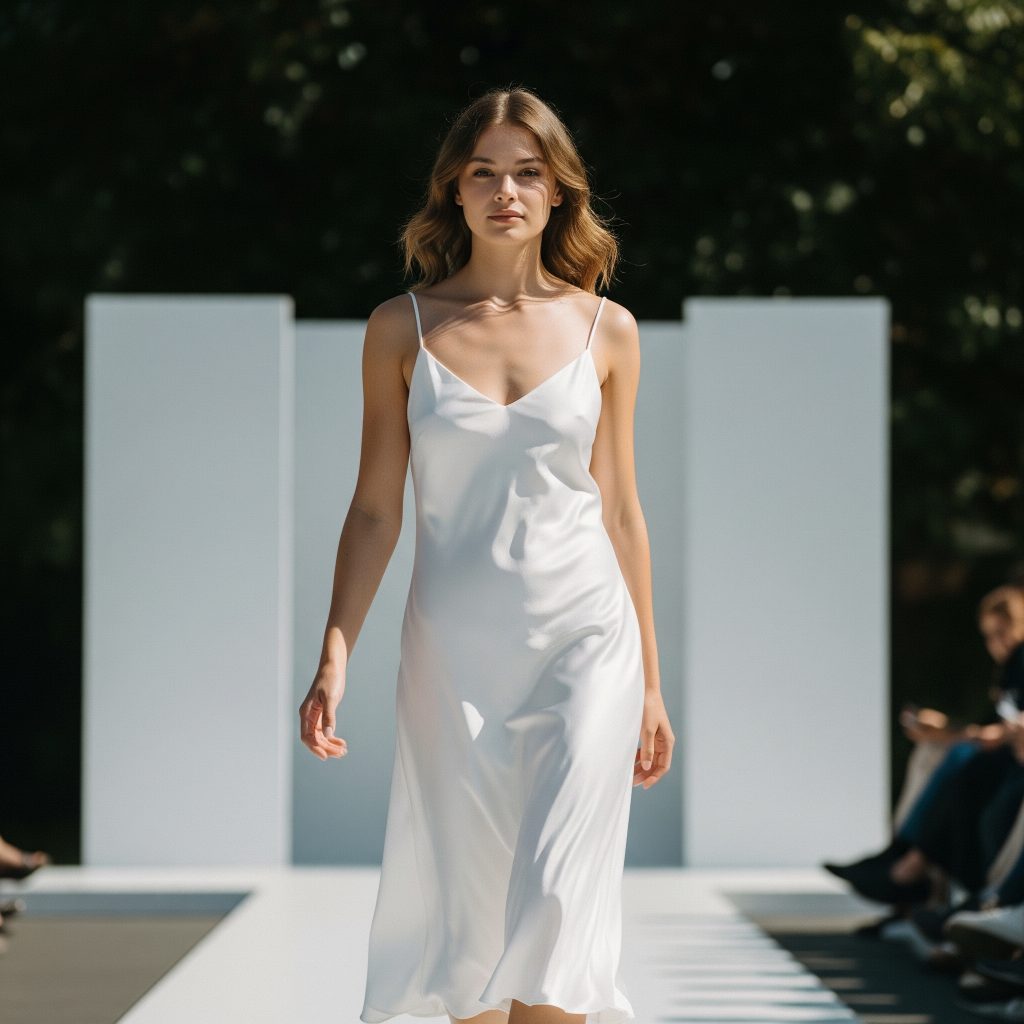
Styling the Slip Dress: The slip dress is a master of versatility, easily transitioning from casual to glamorous with the right accessories.
- Casual Chic: Layer a plain white t-shirt or a fine-knit sweater underneath a midi slip dress. Pair with sneakers or flat boots and a denim jacket for a cool, effortless daytime look.
- Night Out: Wear a silk or satin slip dress on its own with strappy heels, minimalist jewelry, and a sleek clutch. A bold lip can complete the look.
- Elevated Daytime: For a more polished casual look, layer a slip dress under an open button-down shirt (like an oversized linen shirt) or a lightweight blazer. Add espadrilles or block-heel sandals.
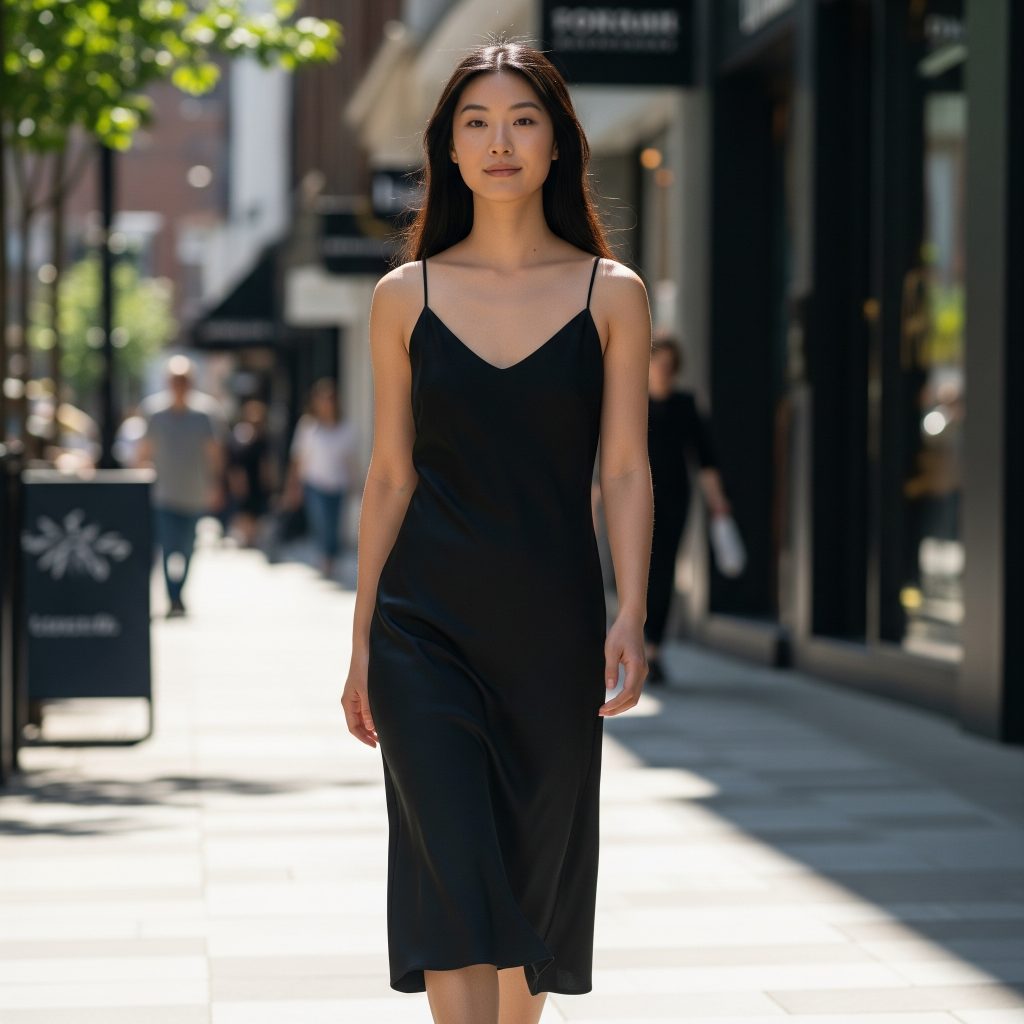
- Formal Events: A maxi-length slip dress in a luxurious fabric like silk or velvet, paired with elegant heels and statement jewelry, can be a stunning choice for semi-formal or even black-tie optional events. The key is in the fabric quality and accessory choice.
- Seasonal Layering: In colder weather, layer a slip dress over a thin turtleneck, add opaque tights, and finish with boots and a long coat.
Who Should Wear It: The slip dress is ideal for those who appreciate minimalist aesthetics and gravitate towards comfort with a touch of sensuality. Its fluid drape can flatter various body types, providing a sleek and elongated silhouette. Confidence in embracing a slightly revealing yet elegant style is key.
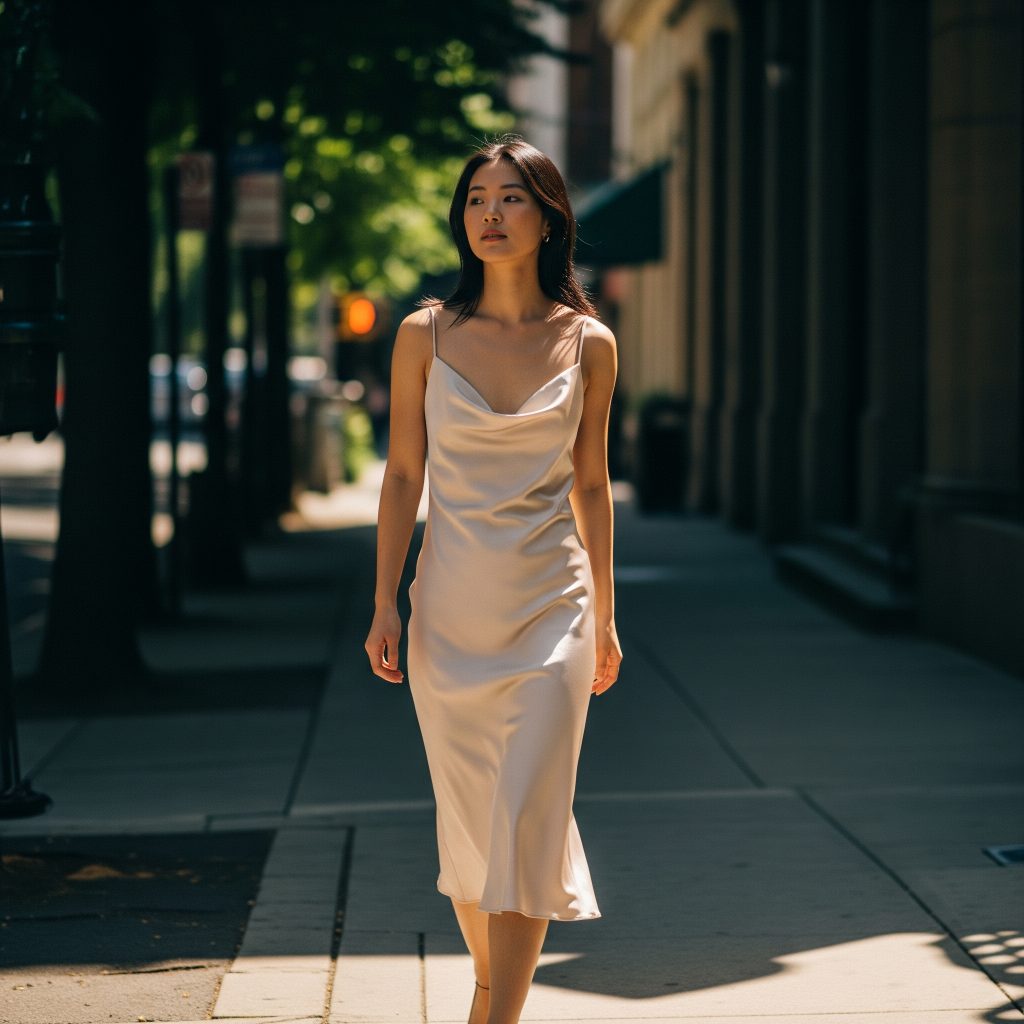
9. The Shirtdress: Structured Comfort and Understated Polish
The Shirtdress is the epitome of smart casual, seamlessly blending the tailored structure of a shirt with the effortless femininity of a dress. Designed like an elongated button-down shirt, often complete with a collar, buttons down the front, and shirt cuffs, it’s a versatile piece that can project anything from relaxed weekend vibes to polished professional appeal.

Origins and Evolution: The concept of a shirtdress has existed in various forms for decades, evolving from utilitarian garments. It gained significant fashion prominence in the 1950s, embodying a sense of post-war practicality and understated elegance. Christian Dior created iconic shirtdresses, and they were popularized by women seeking chic yet comfortable everyday wear. Over the years, the shirtdress has been reimagined in countless fabrics, lengths, and styles, proving its enduring adaptability to changing fashion landscapes and women’s diverse needs.
Why It Endures: The shirtdress endures because of its inherent practicality and timeless appeal. It offers a structured yet comfortable fit, providing a polished look without being overly formal. Its button-down front allows for adjustable necklines and fits, and it often comes with a self-tie belt or loops for a belt, allowing the wearer to cinch the waist for a more defined silhouette or leave it loose for a relaxed look. This versatility makes it a true wardrobe workhorse.
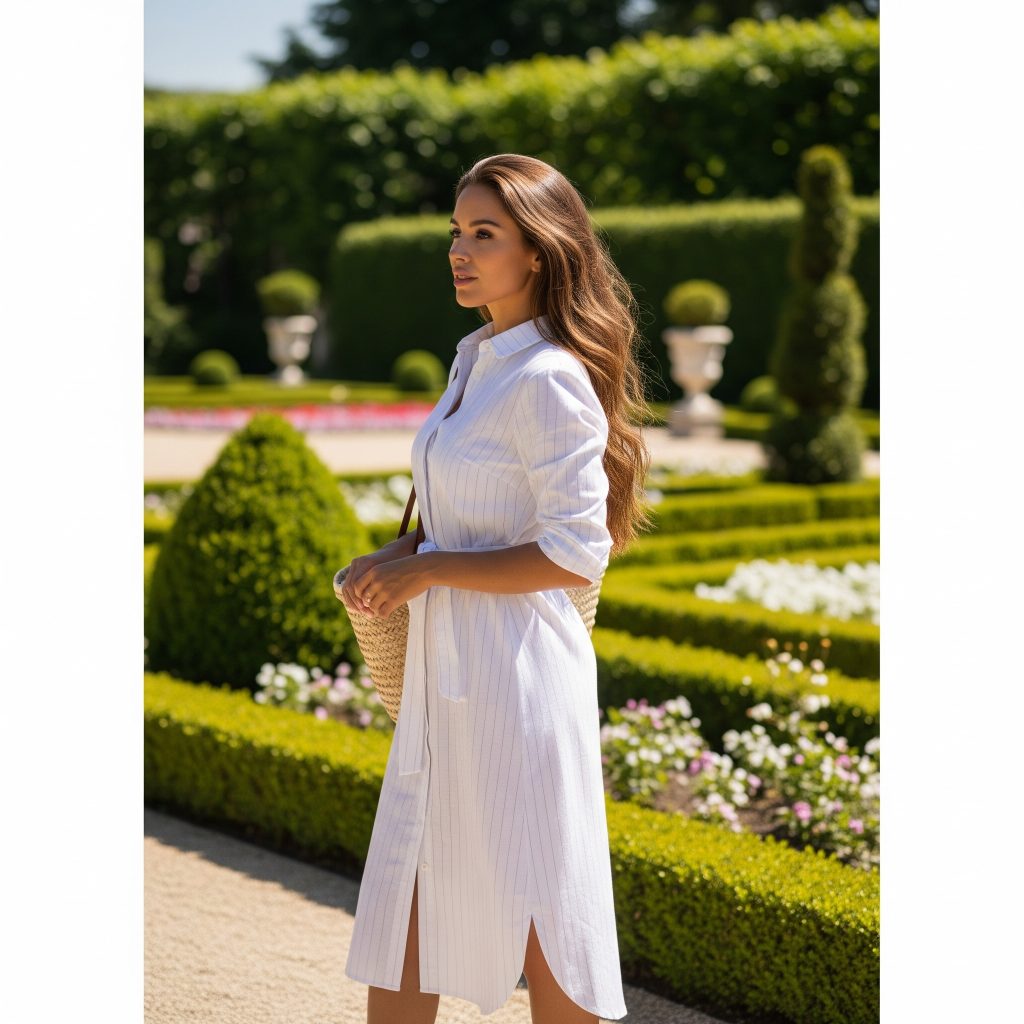
Key Characteristics:
- Silhouette: Resembles an elongated shirt, typically with a straight or slightly A-line cut, though some can be fit-and-flare.
- Fit: Can range from relaxed and oversized to more tailored and fitted. Often includes a tie-belt or loops for cinching the waist.
- Length: Varies widely from mini to midi to maxi, with midi being a very popular and versatile length.
- Necklines & Sleeves: Features a collar and button-down front. Sleeves can be short, rolled, three-quarter, or long with cuffs.
- Fabric: Versatile across fabrics, including crisp cotton, linen, denim, chambray, silk, rayon, and even thicker knits for cooler weather.
Styling the Shirtdress: The shirtdress is a canvas for various looks.
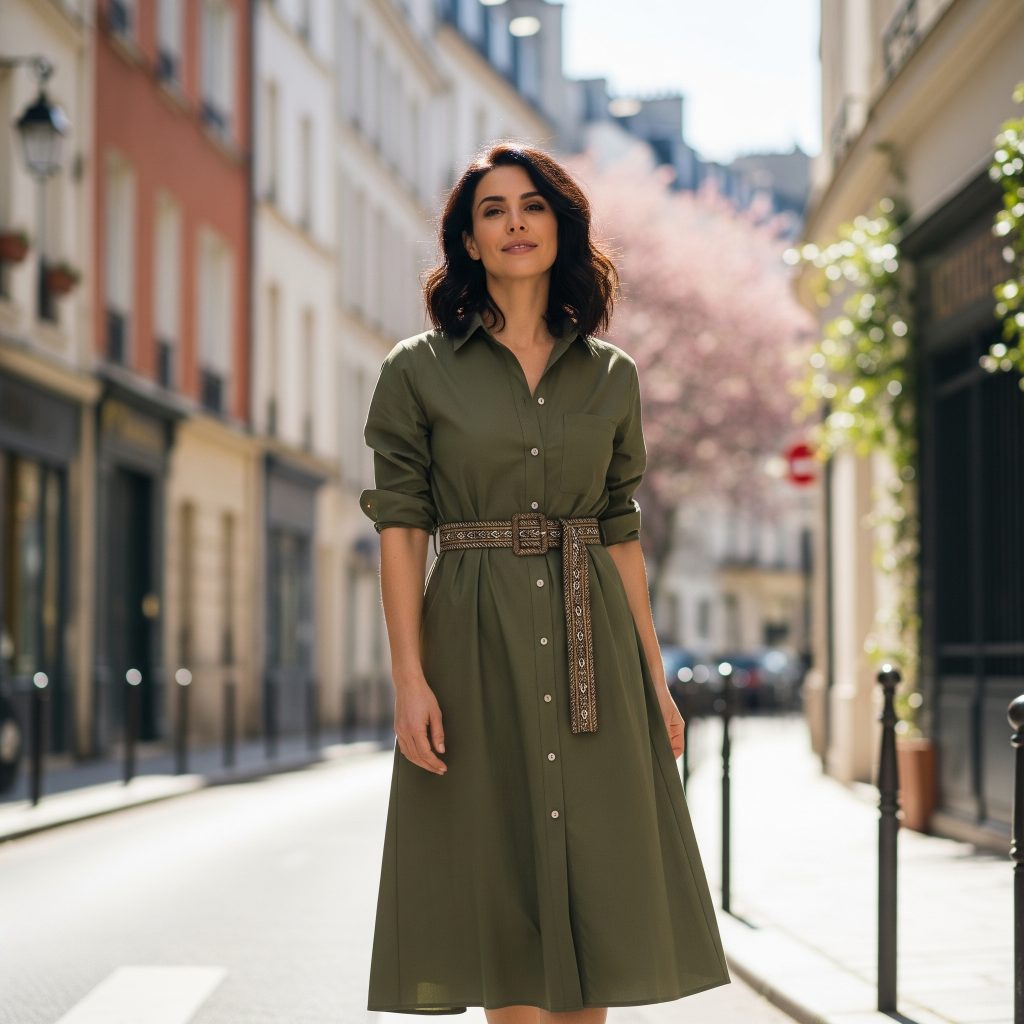
- Polished Professional: A midi-length shirtdress in a crisp fabric (like cotton poplin or tencel) with a structured belt, classic pumps or loafers, and a minimalist tote bag makes for a sharp office ensemble.
- Effortless Casual: An oversized denim or linen shirtdress worn unbelted with sneakers or flat sandals and a cross-body bag is perfect for a relaxed weekend. Rolling up the sleeves adds to the casual vibe.
- Layering Genius: Wear a shirtdress open over a tank top and jeans as a lightweight duster or tunic. In cooler weather, layer a thin turtleneck underneath or a chunky knit sweater over it, treating the bottom as a skirt.
- Evening Twist: Choose a shirtdress in a luxurious fabric like silk or satin, perhaps with a bold print or interesting details. Cinch it with an elegant belt, add heels, and statement jewelry for a chic evening look that is both sophisticated and comfortable.
Who Should Wear It: The shirtdress is incredibly versatile and can flatter a wide range of body types. The option to belt it allows for waist definition for those who desire it, while a looser fit offers comfort and a relaxed silhouette. It’s a particularly good choice for those who value practicality, comfort, and a polished, understated style.

10. The Ball Gown: The Epitome of Grandeur and Fairytale Glamour
The Ball Gown is not merely a dress; it is a declaration. Characterized by a fitted bodice and an extraordinarily full, voluminous skirt, it is the quintessential garment for the most formal and grandest of occasions. This is the dress you wear when you want to make an unforgettable entrance, embodying a sense of fairytale romance and magnificent glamour.
Origins and Evolution: The ball gown’s history is deeply intertwined with European aristocracy and courtly events. Its origins can be traced back to the extravagant formal wear of the 18th and 19th centuries, particularly the grand balls of the Victorian and Edwardian eras. These gowns were symbols of wealth, status, and intricate craftsmanship, designed to awe and impress in opulent settings. While the specific silhouettes have evolved (from crinolines to bustles to more modern full skirts), the core essence of a ball gown—a fitted top and a dramatic, voluminous skirt—has remained constant, making it the ultimate formal statement for centuries.
Why It Endures: The ball gown endures because it fulfills a primal human desire for spectacle and celebration. It’s a garment designed for moments of pure fantasy and grandeur, allowing the wearer to feel like royalty. Its dramatic silhouette is inherently awe-inspiring, creating a commanding and ethereal presence. It represents the pinnacle of formal dressing, reserving its grandeur for the most significant life events and ceremonial occasions.
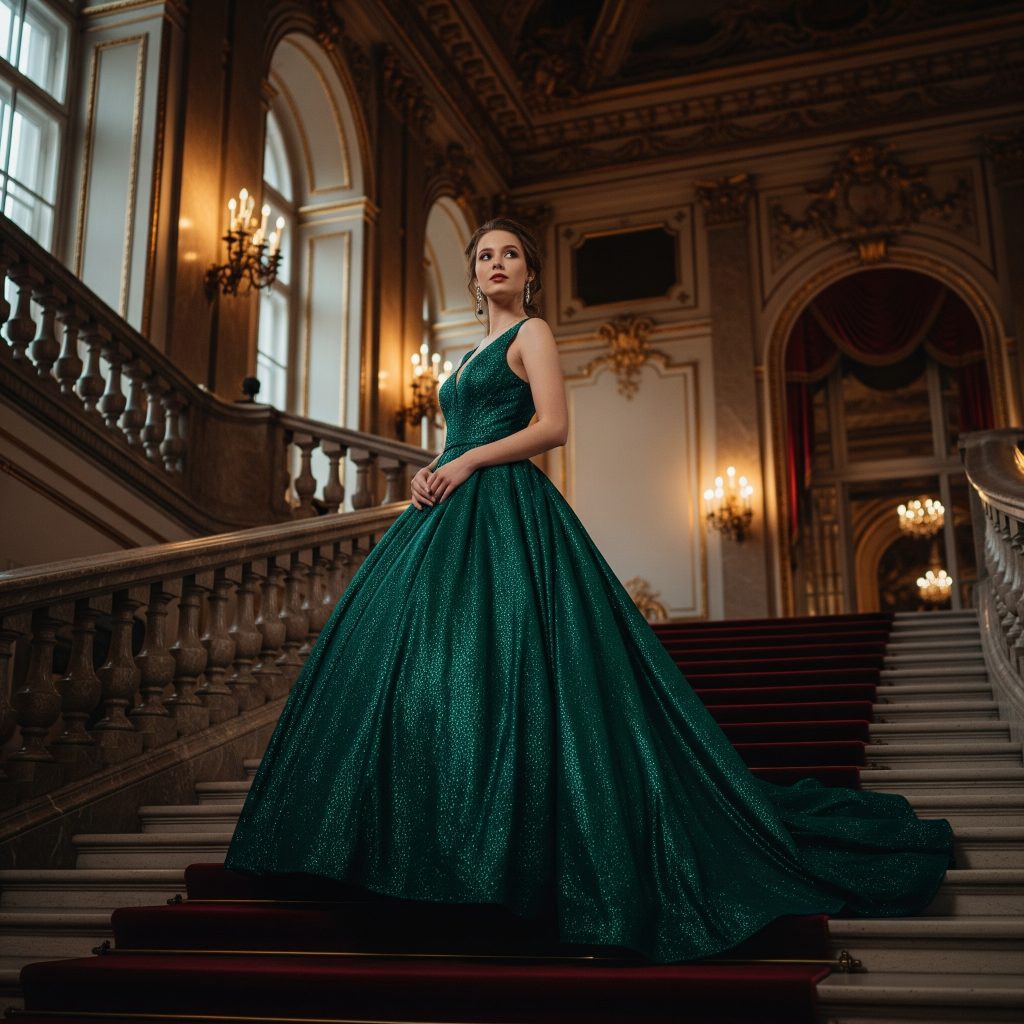
Key Characteristics:
- Silhouette: Distinctive fitted bodice and a dramatically full, often layered, skirt that sweeps the floor.
- Fit: The bodice is tightly fitted to the torso, often boned or corseted, while the skirt flares out dramatically from the waist or hips.
- Length: Always floor-length, often with a train.
- Necklines & Sleeves: Common necklines include strapless, sweetheart, off-the-shoulder, illusion, and scoop. Sleeves are rare, with sleeveless or delicate cap sleeves being most common.
- Fabric: Constructed from luxurious and often heavy fabrics that can hold their voluminous shape, such as satin, silk, taffeta, organza, tulle, velvet, and intricate lace, often embellished with beading, embroidery, or sequins.
Styling the Ball Gown: Styling a ball gown is about embracing its inherent grandeur and ensuring every element contributes to the overall majestic look.

- The Occasion: Ball gowns are reserved for the most formal events: black-tie galas, charity balls, formal weddings (especially as a bride or bridal party member), debutante balls, and certain prestigious awards ceremonies.
- Minimalist Accessories: Given the gown’s inherent drama, accessories should complement, not compete. Delicate diamond or pearl jewelry (earrings, a simple necklace) and a small, elegant clutch are usually sufficient.
- Hair and Makeup: Updos are popular to showcase the neckline and add to the elegant stature. Makeup can be glamorous but should enhance, not overpower.
- Footwear: High heels are essential to support the length of the gown and contribute to the elegant posture. They are typically hidden by the voluminous skirt.
- Confidence: The most crucial accessory for a ball gown is confidence. Owning the grand presence it commands is key to truly embodying its spirit.
Who Should Wear It: A ball gown is for anyone attending a truly formal event where such a level of grandeur is expected and appropriate. While historically associated with specific body types, modern ball gowns come in various constructions that can flatter many figures, from empire waists to natural waistlines. The most important factor is the occasion itself and the desire to make an unforgettable, regal statement.
From the boardroom to the ballroom, the world of women’s dress styles is rich, diverse, and deeply empowering. Each of these 10 foundational silhouettes offers a unique opportunity to express personal style, adapt to any occasion, and project the kind of confidence that can only come from truly understanding your attire. It’s not just about what you wear; it’s about how you wear it, and the statement you make with every stitch and seam. So, choose wisely, wear boldly, and remember that true style is about more than just fashion – it’s about making your mark.
Join the Brotherhood – Get the Newsletter
Why join?
Because average isn’t an option.
Our newsletter delivers raw insights on strength, discipline, and growth – straight to your inbox. No fluff. No excuses. Just real tools to help you lead, build, and conquer.
Join the Brotherhood. Rise above.

